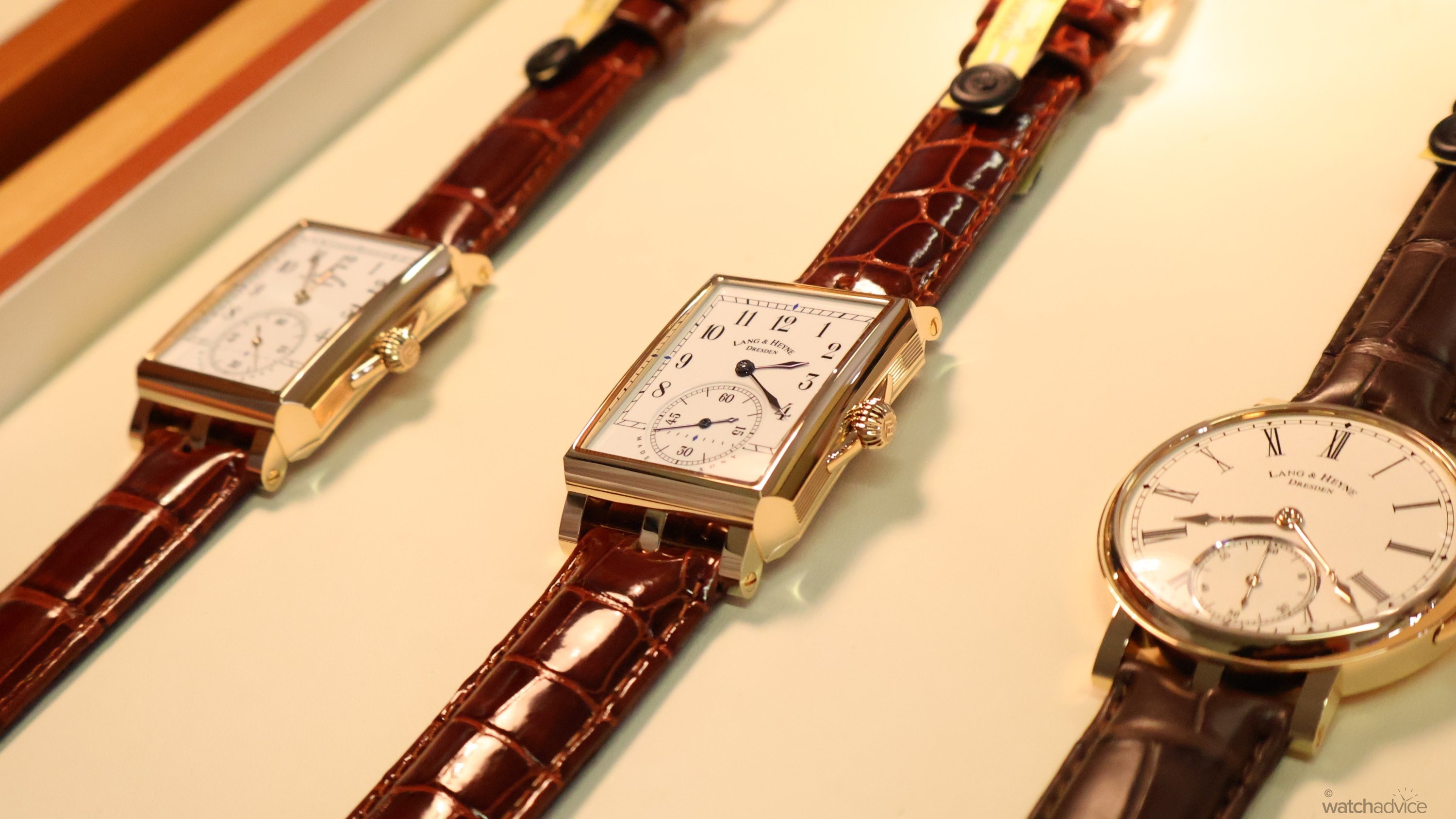The first stop in my Travelling Time series is Dresden, Germany. Earlier this year, I spent the day exploring both the wonderful town as well as the incredible haute horlogerie of Lang & Heyne!
As you may have gathered from my posts this year, I’m a sucker for German watchmaking. Granted, it’s partly that off-the-beaten-path, “I’m not like other girls” attitude I bring to horology, but my fascination with it is genuine. For all their outward simplicity, the inner workings of German timepieces set them well apart from their Japanese and even Swiss peers. From the three-quarter plate to the flying tourbillon, the sleek, pragmatic, and elegant nature of Germany’s horological creations is something every enthusiast should appreciate.
While Germany boasts a handful of well-known heritage brands, the archetypes of German watchmaking are often attributed almost entirely to the town of Glashütte. And rightly so, as Glashütte Original, A. Lange & Söhne, Moritz Grossmann, and NOMOS, among others, all call the town home.
However, few realise that one of the true powerhouses of German horology lies just forty minutes away. Join me as I recount my time with Lang & Heyne, a masterful watch brand that stands as a modern standard-bearer of contemporary German haute horlogerie.
Meeting of Minds
If this is the first time you’ve heard of Lang & Heyne, you might think that closing statement sounds a little far-fetched. I wouldn’t blame you for that; The benchmark for German watchmaking has certainly been set high by Glashütte, and fresh off a stellar factory visit with Glashütte Original, I began to wonder if I’d become too desensitised to surprises However, after doing my due diligence on Lang & Heyne, I knew I was in for a radically different, yet equally remarkable, experience.
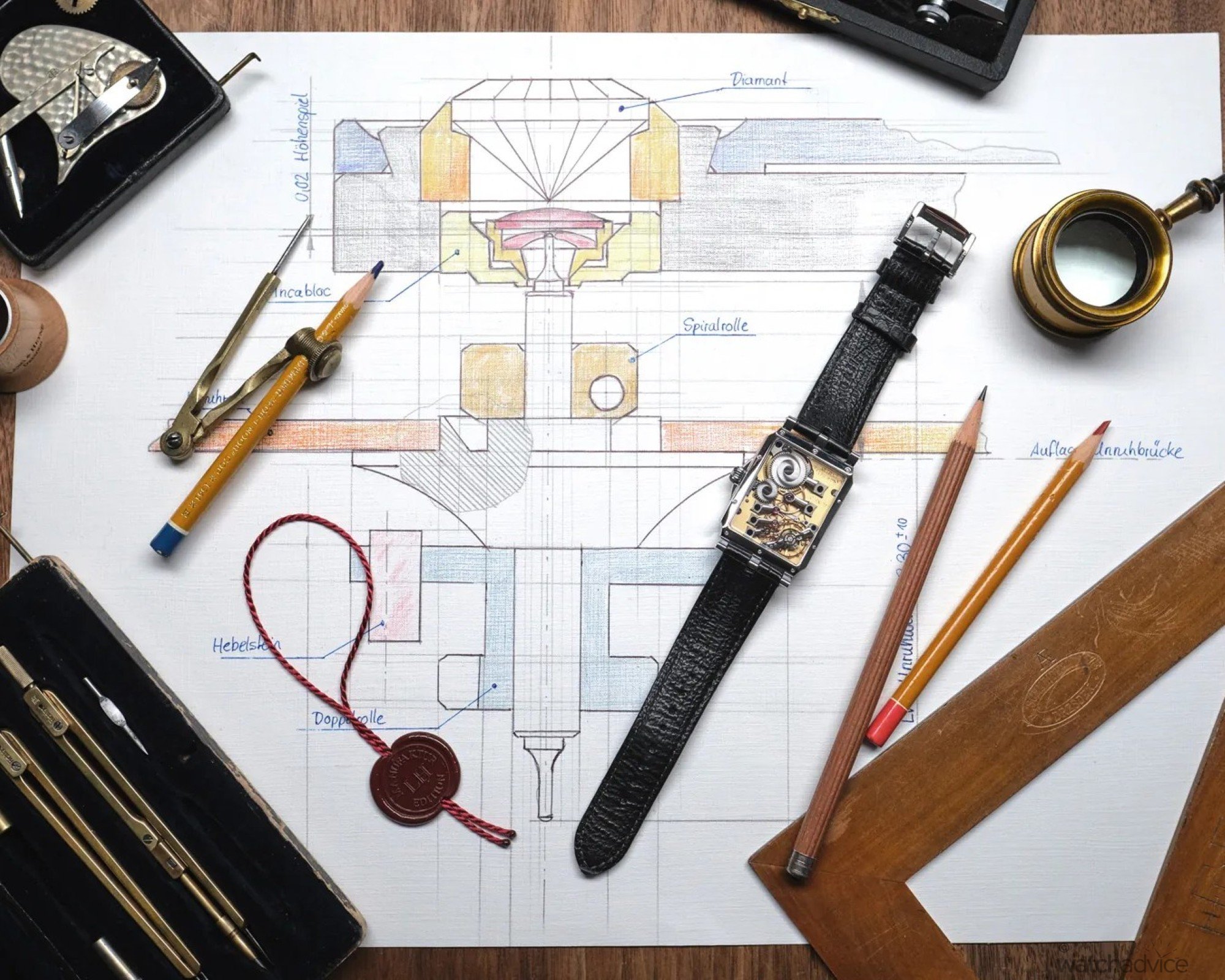
As mentioned in my introduction to the Travelling Time series, Lang & Heyne is relatively young compared to its heritage-rich peers. The brand was founded in 2001 by fifth-generation watchmaker Marco Lang and his friend Mirko Heyne. Interestingly, neither Lang nor Heyne is directly involved with the brand today; Heyne departed about a year after its founding to work with Nomos, while Lang eventually distanced himself to establish his own eponymous brand.
Their friendship, however, allowed the name to remain. Lang & Heyne continues operations to this day under the Tempus Arte GmbH banner, hitting 24 years on this year — about the same length of time I’ve been alive. For such an ultra-exclusive name, I was thoroughly surprised to learn that Lang & Heyne has an authorised dealer in Queensland, albeit up in Noosa. By the time I arrived in Dresden, my anticipation had reached a fever pitch.
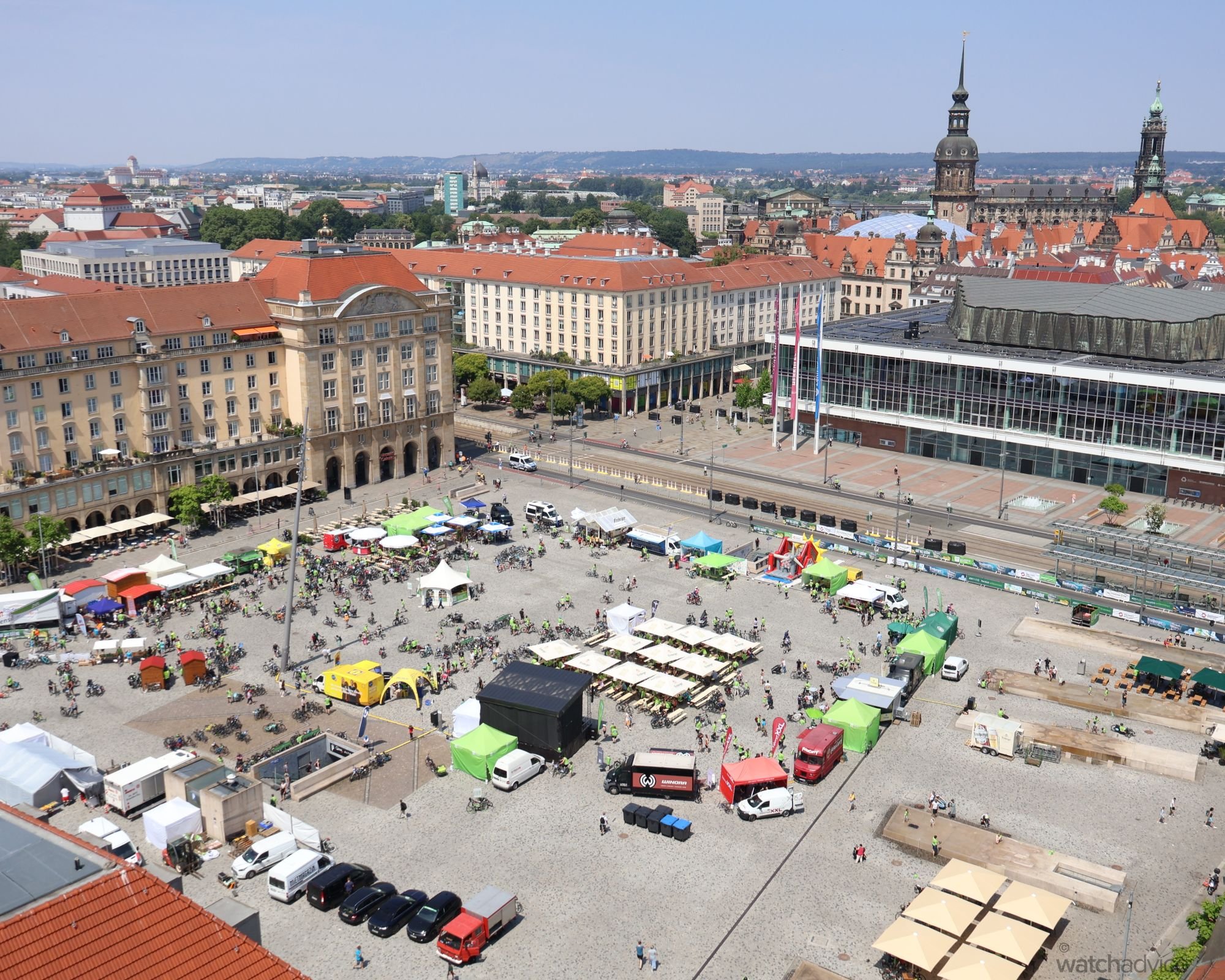
On the morning of the tour, I was greeted outside my hotel by Sales Director Gülsen Tek, who had kindly taken the time to pick me up. This time, however, I wouldn’t be alone; prolific watch collector and Lang & Heyne enthusiast Steve Ball would also be joining us for the visit. As we loaded into Gülsen’s car, I found myself looking forward not just to discovering the brand first-hand, but also to meeting one of its most passionate supporters.
Exploring The Todenmühle
What does ‘in-house’ really mean in the watch industry? For some, it’s little more than laser-engraving their logo onto an ETA or Sellita calibre and calling it a day. For others, it means intricately designing, manufacturing, and finishing their own movement. Yet Lang & Heyne goes beyond even that definition, with around 95% of its watchmaking done entirely within its own manufacture.
The brand’s pride in its craftsmanship quickly became evident through my conversations with Gülsen and Steve as we drove towards the outskirts of Dresden. Beyond watches, though, we clicked instantly. Our chat soon meandered from travel stories to music preferences, setting the tone for an enjoyable and memorable day ahead.
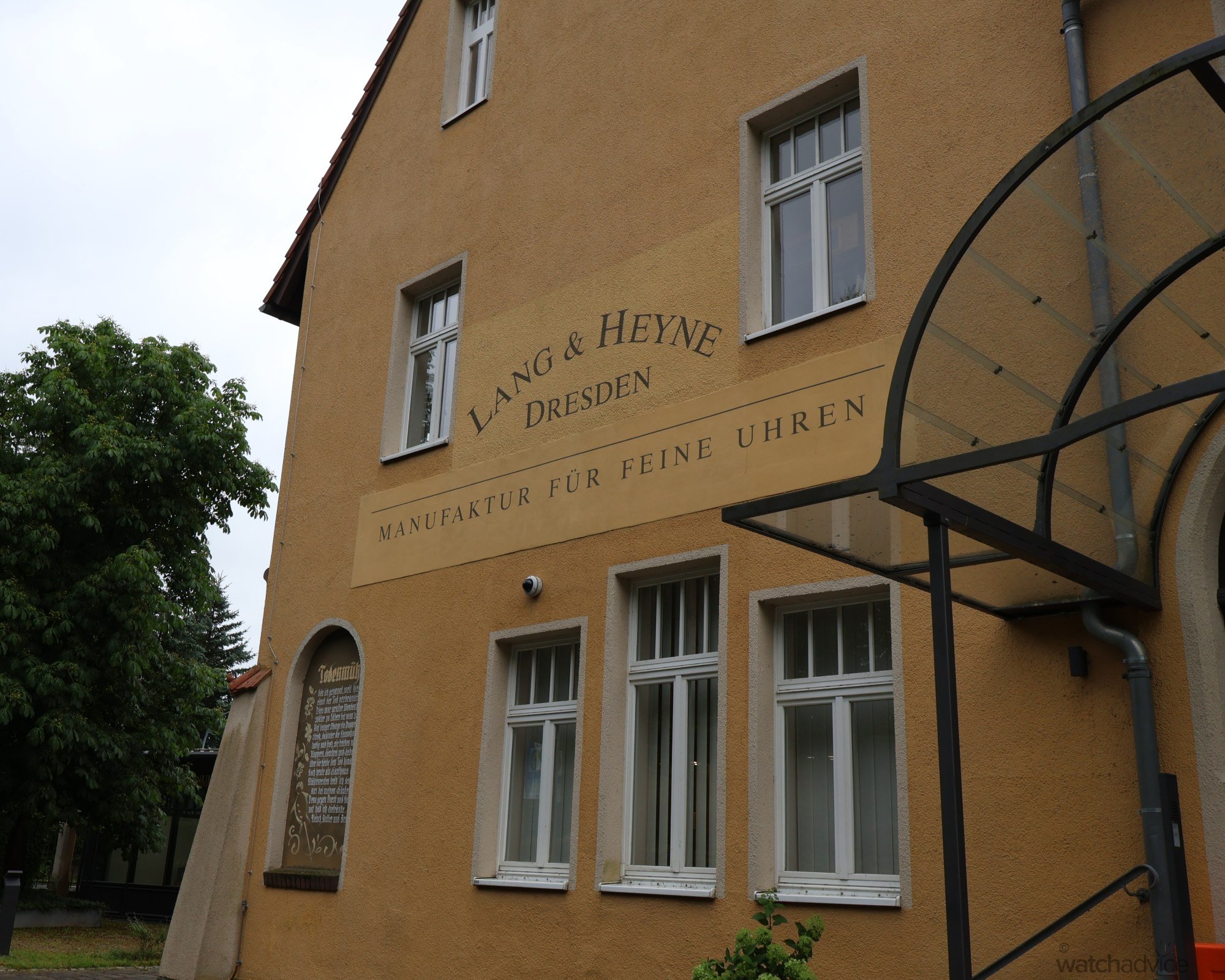
Eventually, we arrived at Lang & Heyne’s Todenmühle manufactory, situated right on the border between Dresden and the neighbouring town of Radeberg. I mean that quite literally, as the tree in the roundabout car park actually sits within both Dresden’s and Radeberg’s council jurisdictions. Gülsen gave me a small taste of German bureaucracy, explaining that if anything were ever to happen to the tree, both governing bodies would have to respond and coordinate accordingly. A smooth and speedy process, I’m sure.
From there, we met up with Dominique Jahn, Lang & Heyne’s Head of Marketing and my main point of contact online. Given the brand’s small size, Dominique’s role also extends to helping clients digitally model their upcoming timepieces. With Lang & Heyne’s openness to bespoke orders, this skill is invaluable in ensuring every detail of a watch meets each client’s exact specifications. Not an enviable position from my point of view, but it’s certainly a deeply respectable one, highlighting Dominique’s versatility and talent.
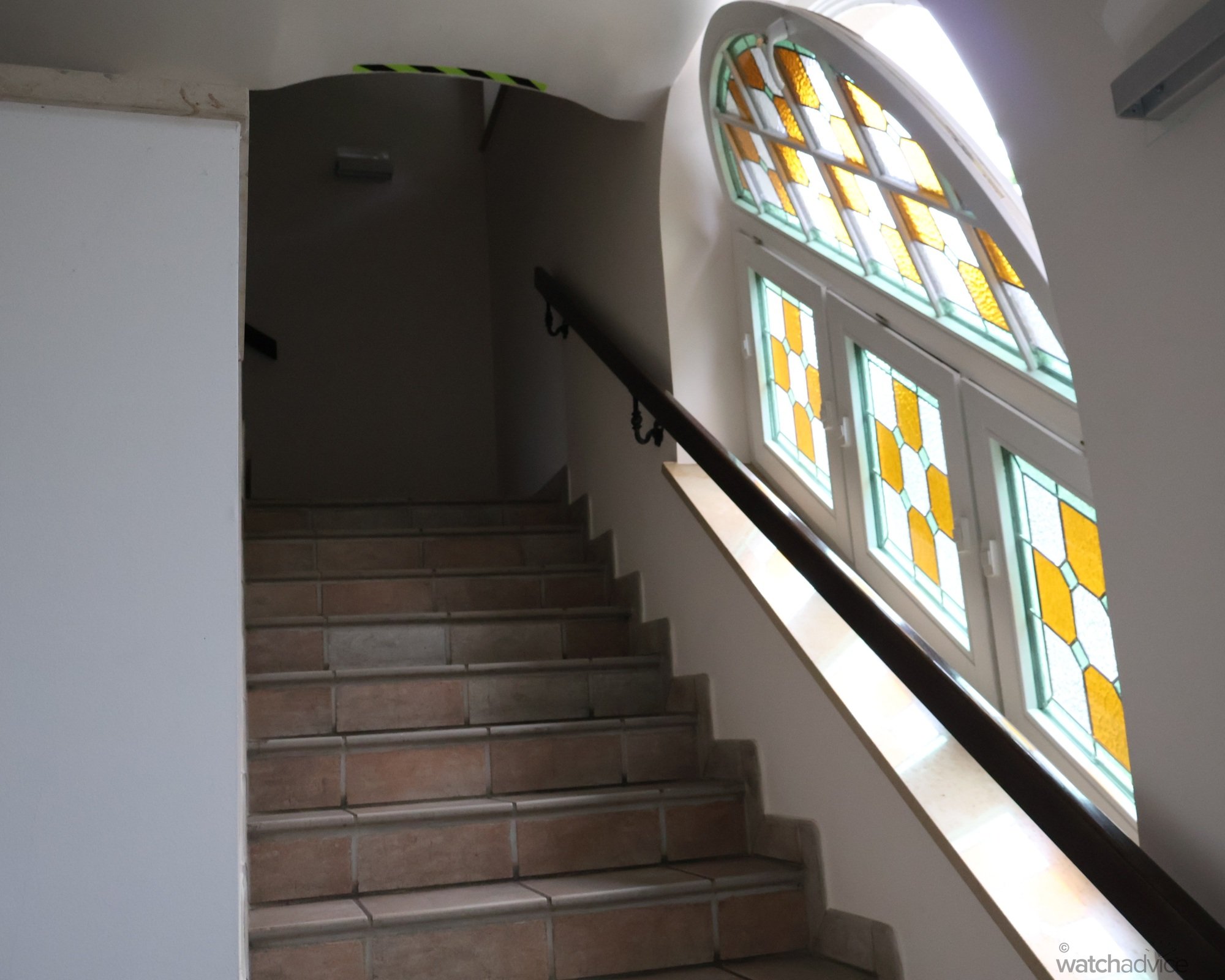
Gülsen eventually broke off from Steve and I as Dominique took us through the Todenmühle. Prior to Lang & Heyne moving in, the manufactory formerly housed a restaurant, making for a uniquely cozy and intimate space for the artisanal watchmaking. It also featured many small quirks that got the better of me, as I bonked my head on shorter doorways and tripped over unexpected ledges. I did not experience any major navigational troubles, though, and it didn’t affect my overall opinion of the time I spent there.
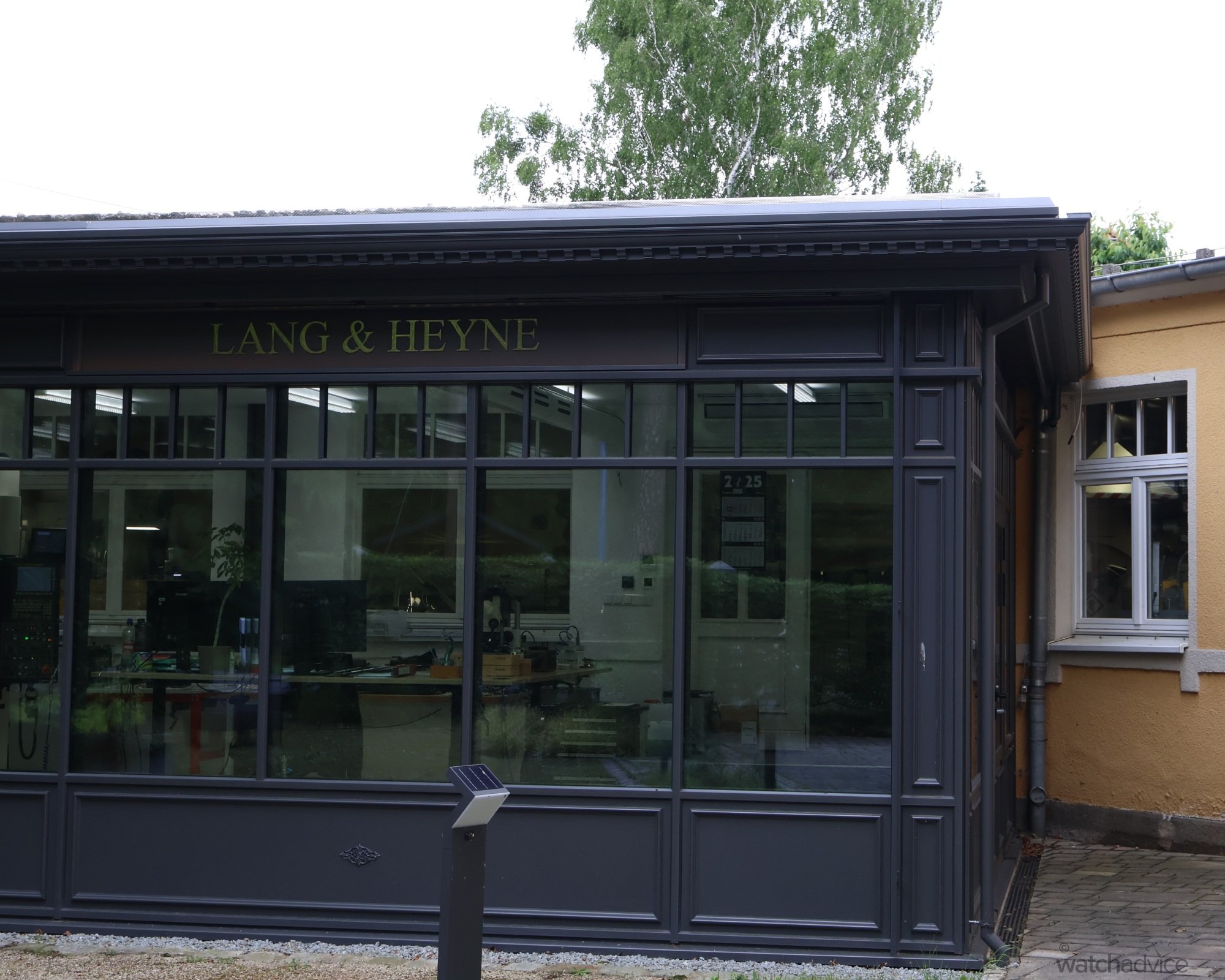
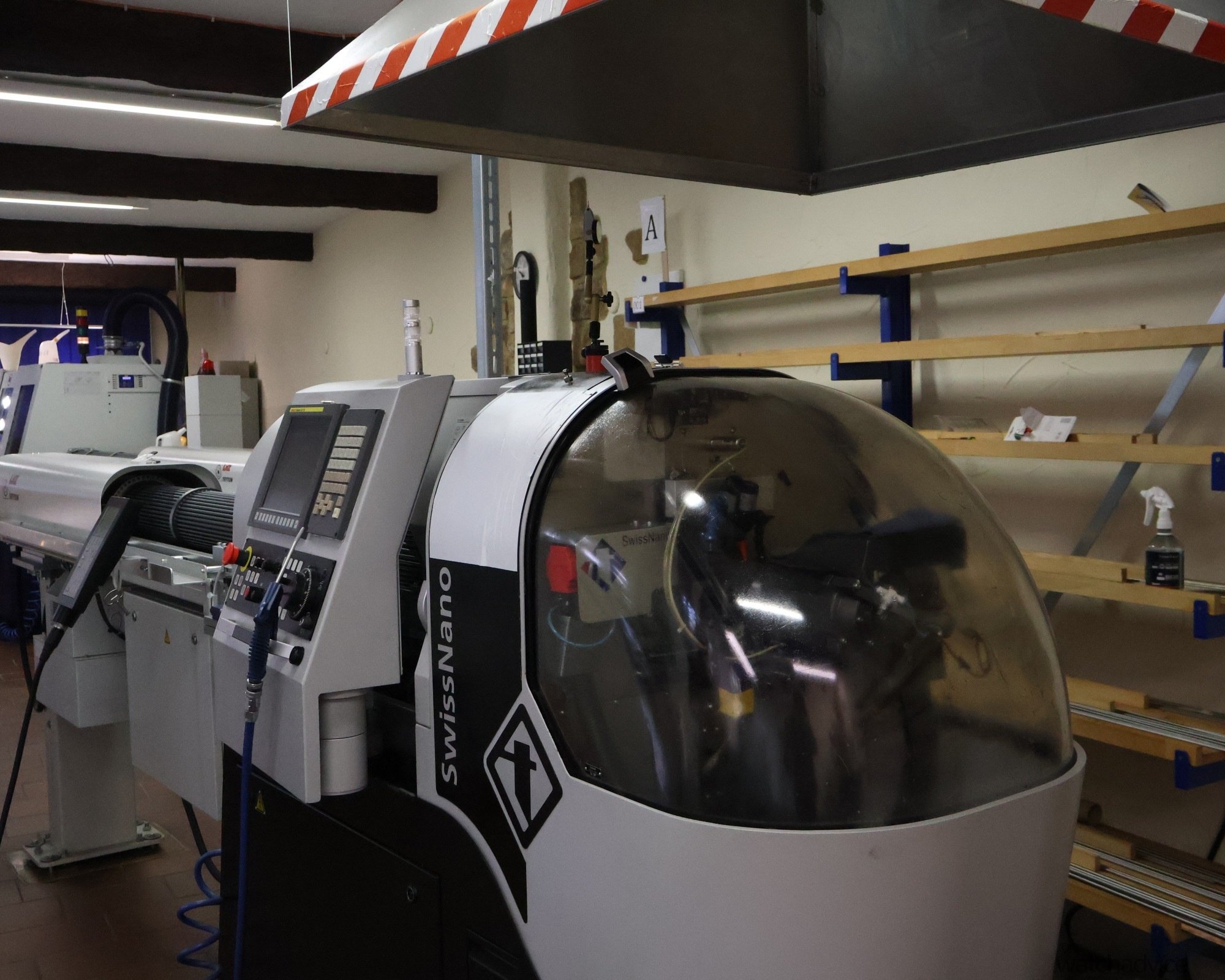
Dominique led us to the newest section of the Todenmühle, an extension built to house most of Lang & Heyne’s manufacturing capabilities. As I mentioned earlier, almost every component of a Lang & Heyne timepiece is made in-house — and nowhere is that more evident than in this room. State-of-the-art machinery filled the space, including CNC lathes anchored deep into the former wine cellar below for added stability.
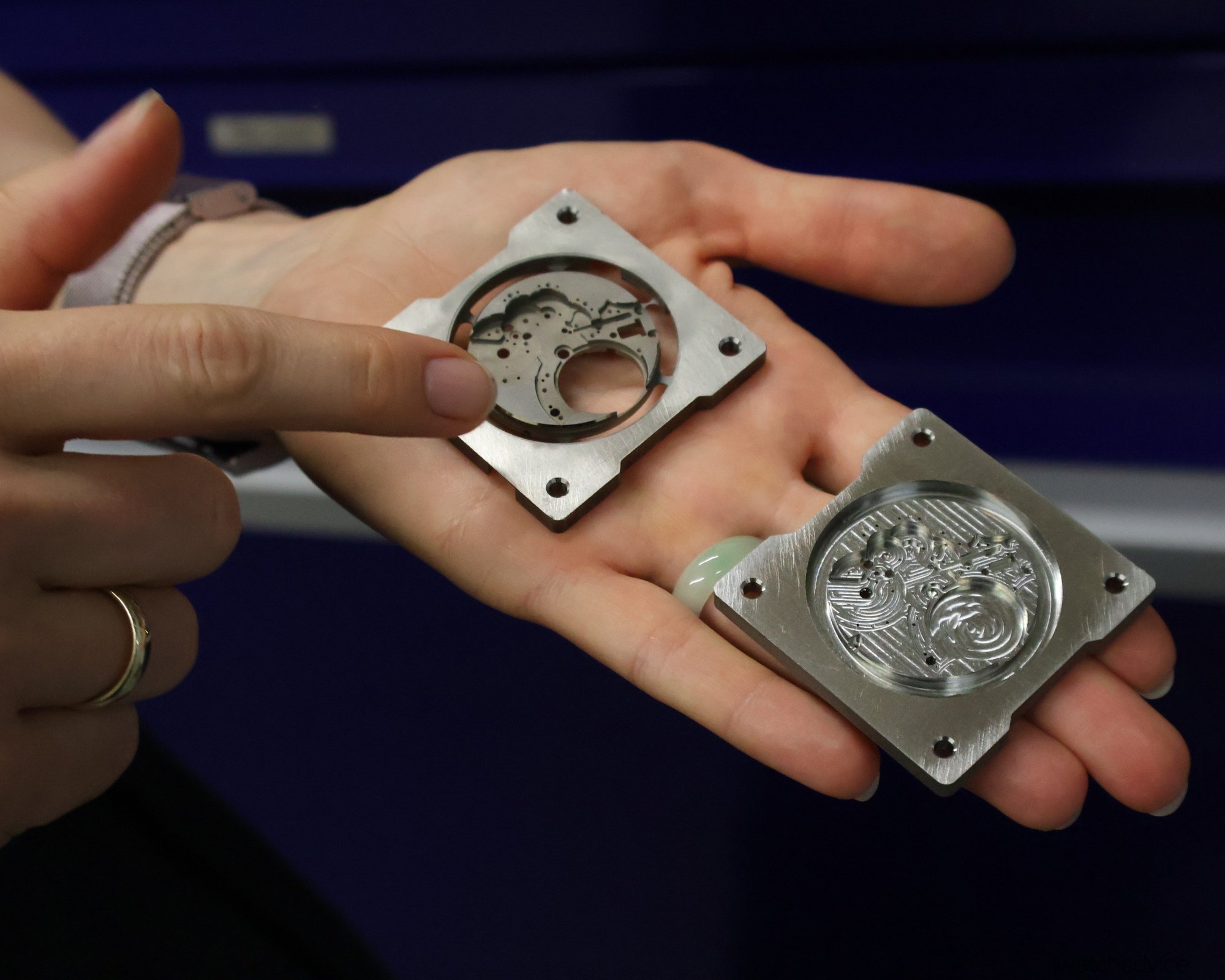
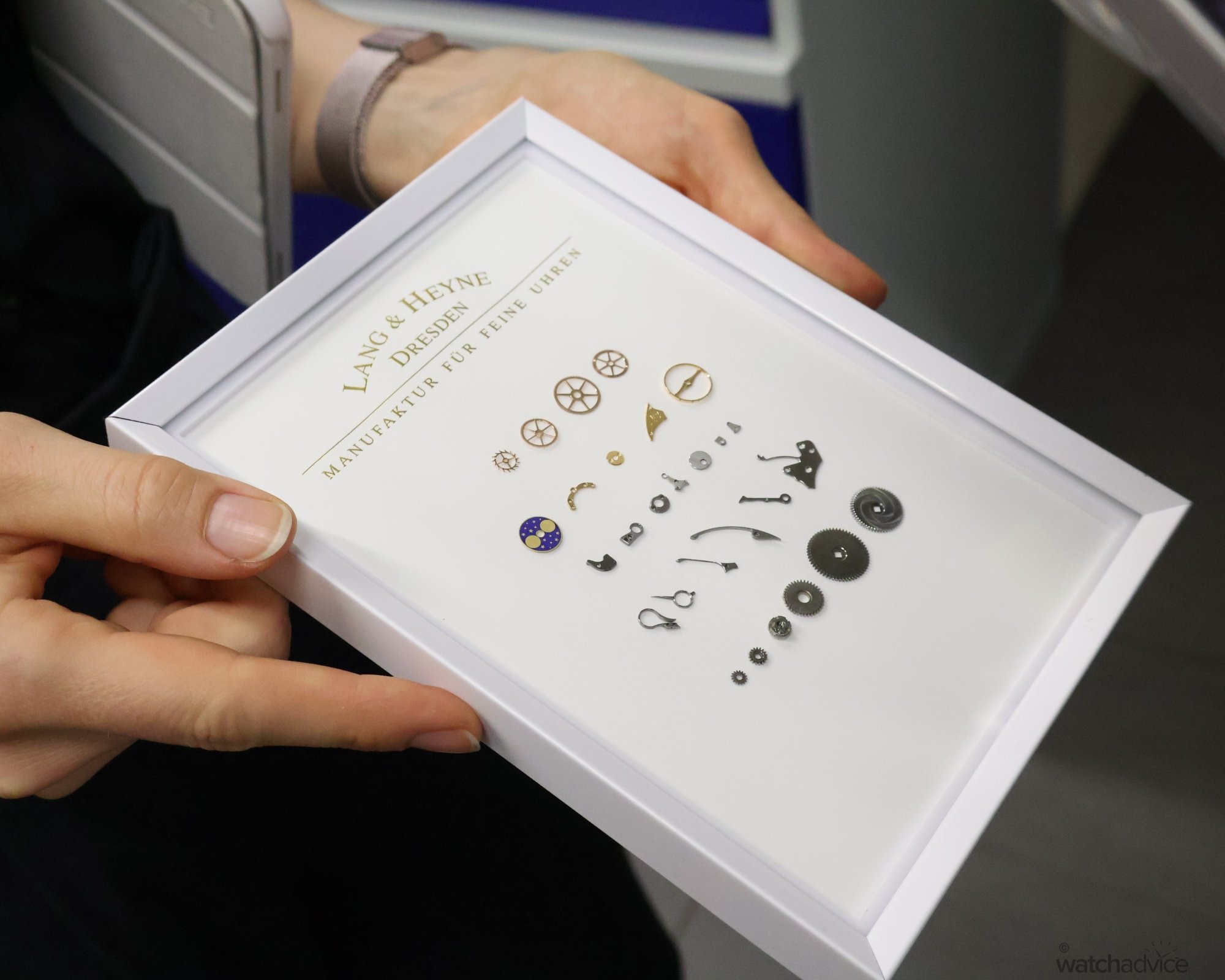
All of it serves one purpose: to uphold Lang & Heyne’s exceptional standards of craftsmanship. This is where the gears, wheel trains, escape wheels, plates, and bridges of every Lang & Heyne watch come to life. I’ll never get over the fact that it takes such immense and complex machinery to produce components smaller than a fingernail. Perhaps this is how visitors to the Large Hadron Collider feel.
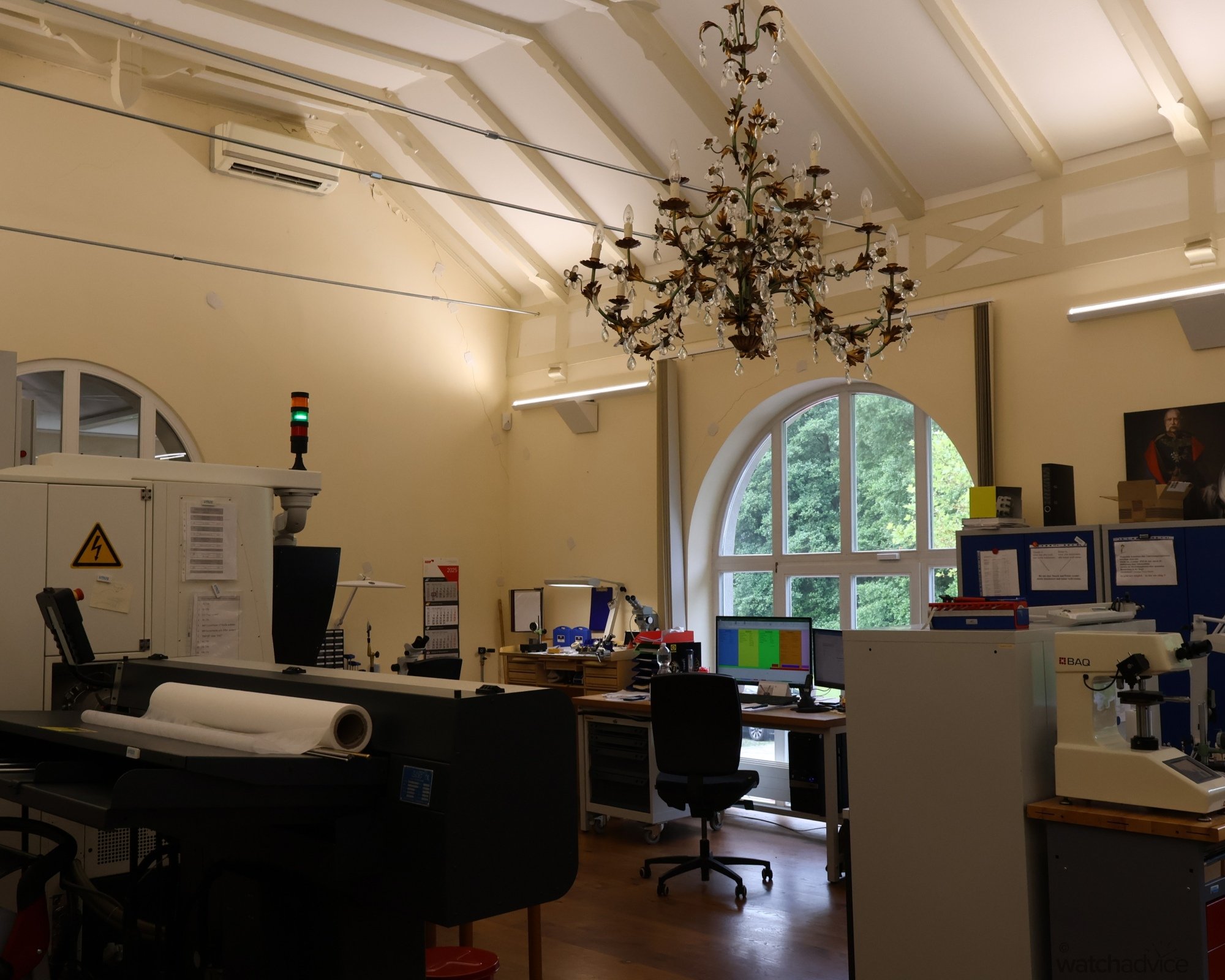
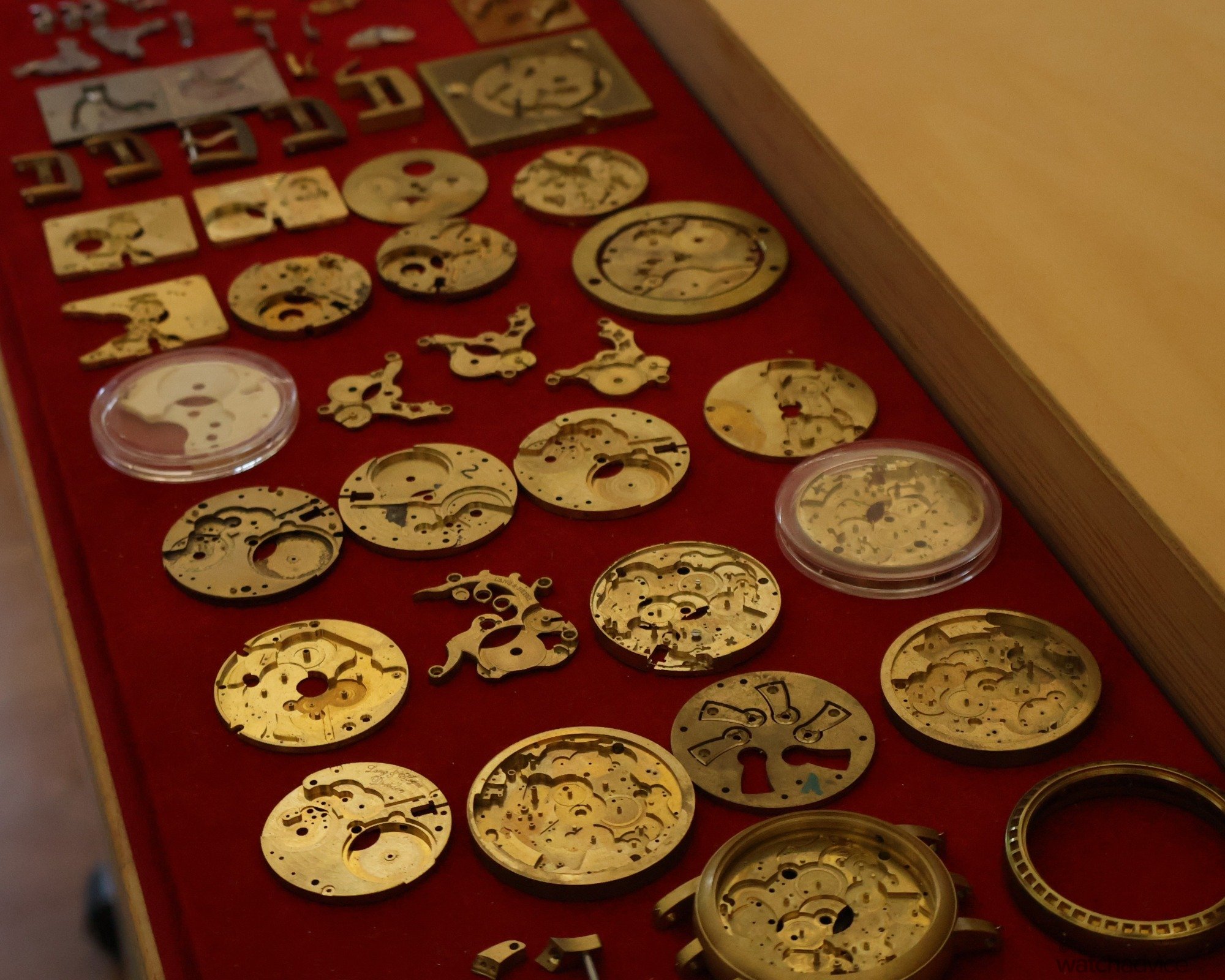
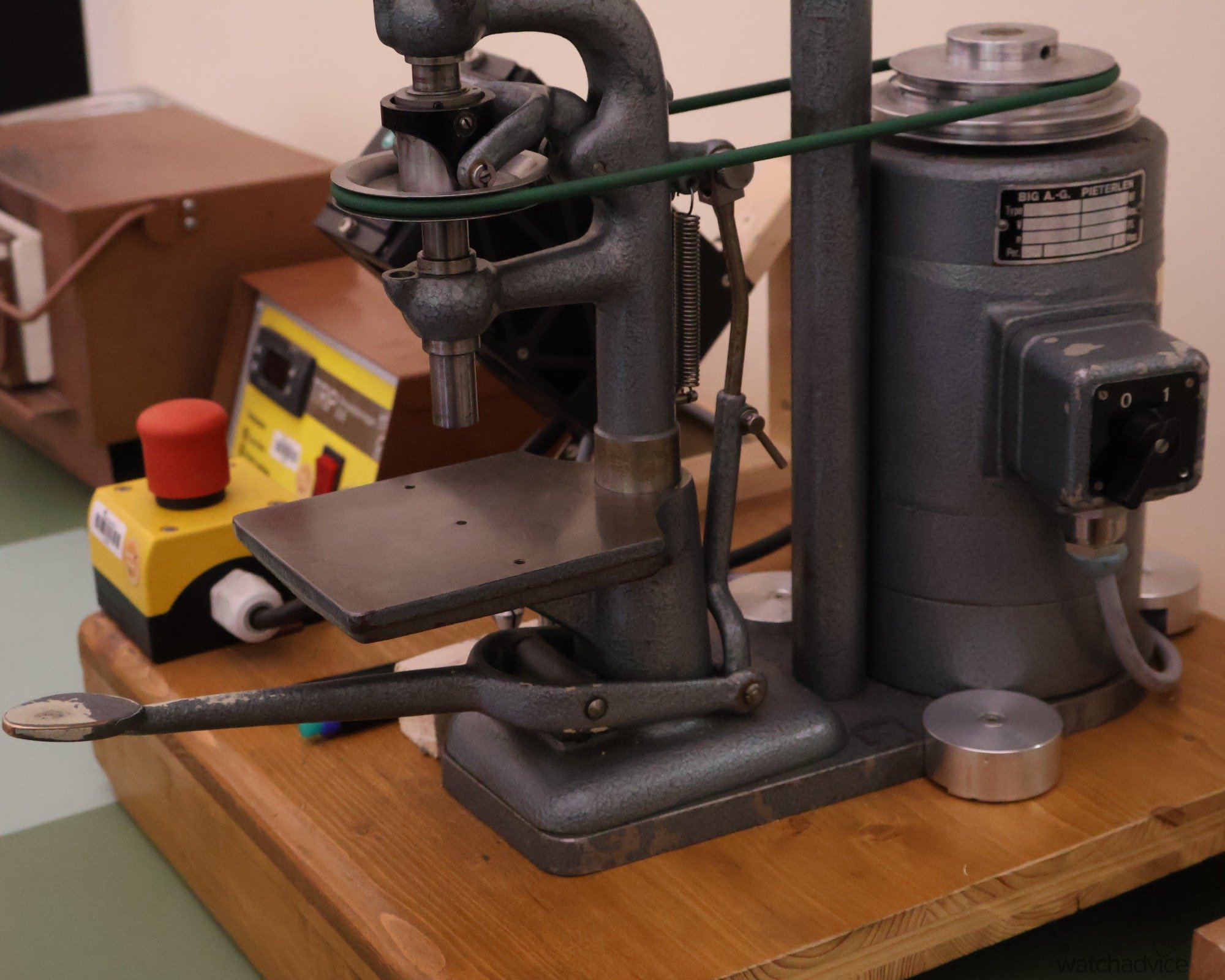
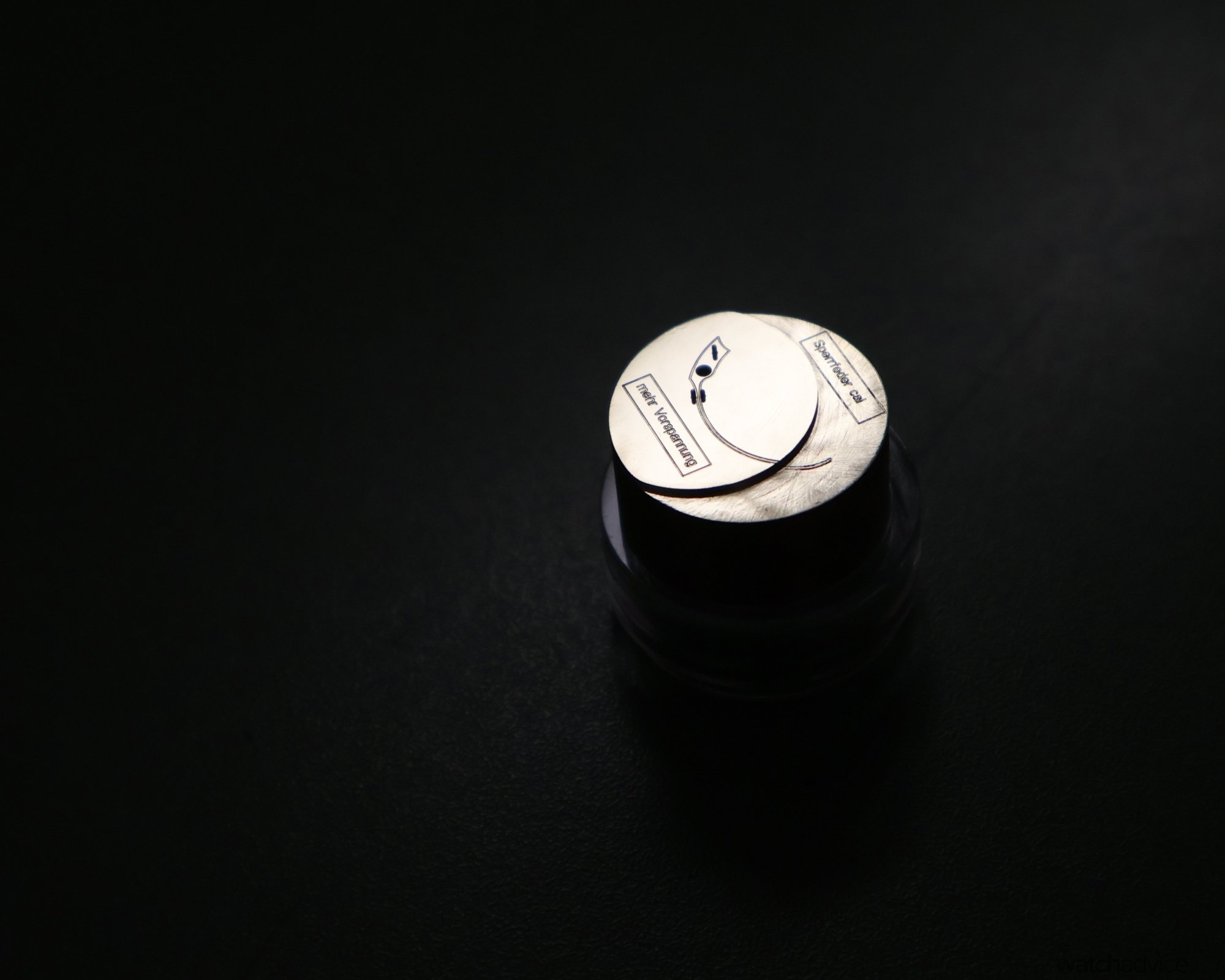
The manufacturing continues on the first floor, where Dominique guided us into what was once the ballroom. The dancing is long gone, replaced by an art form just as vibrant, though far more deliberate: watchmaking. A large CNC mill takes centre stage, while workbenches lined with traditional tools fill the rest of the room.
From what I was told, many of the machines Lang & Heyne uses are no longer produced, yet they still perform the same tasks they were built for now in the capable hands of the manufactory’s skilled artisans. As the workshop buzzed with activity, Steve and I made sure to admire the craftsmanship from a respectful distance.
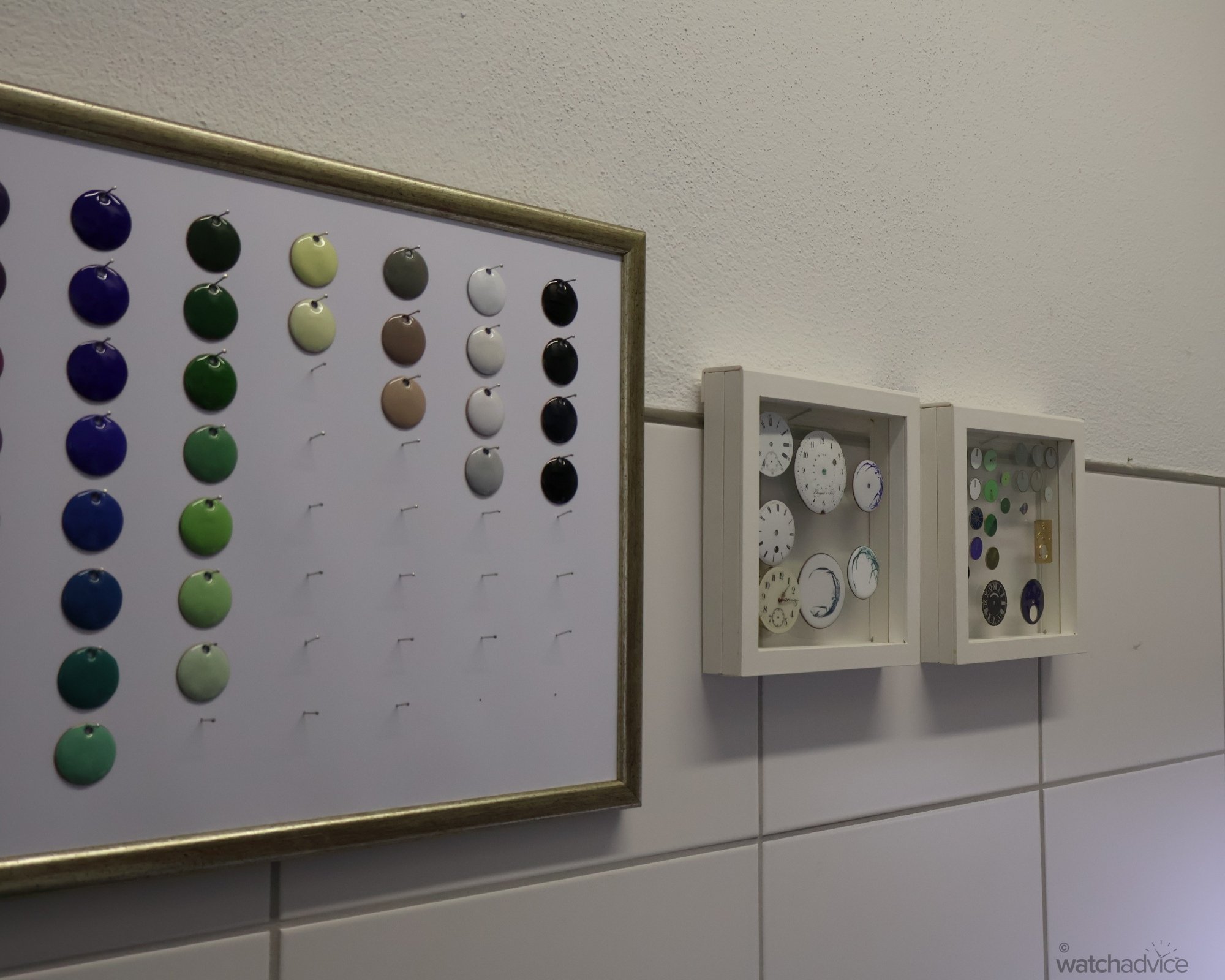
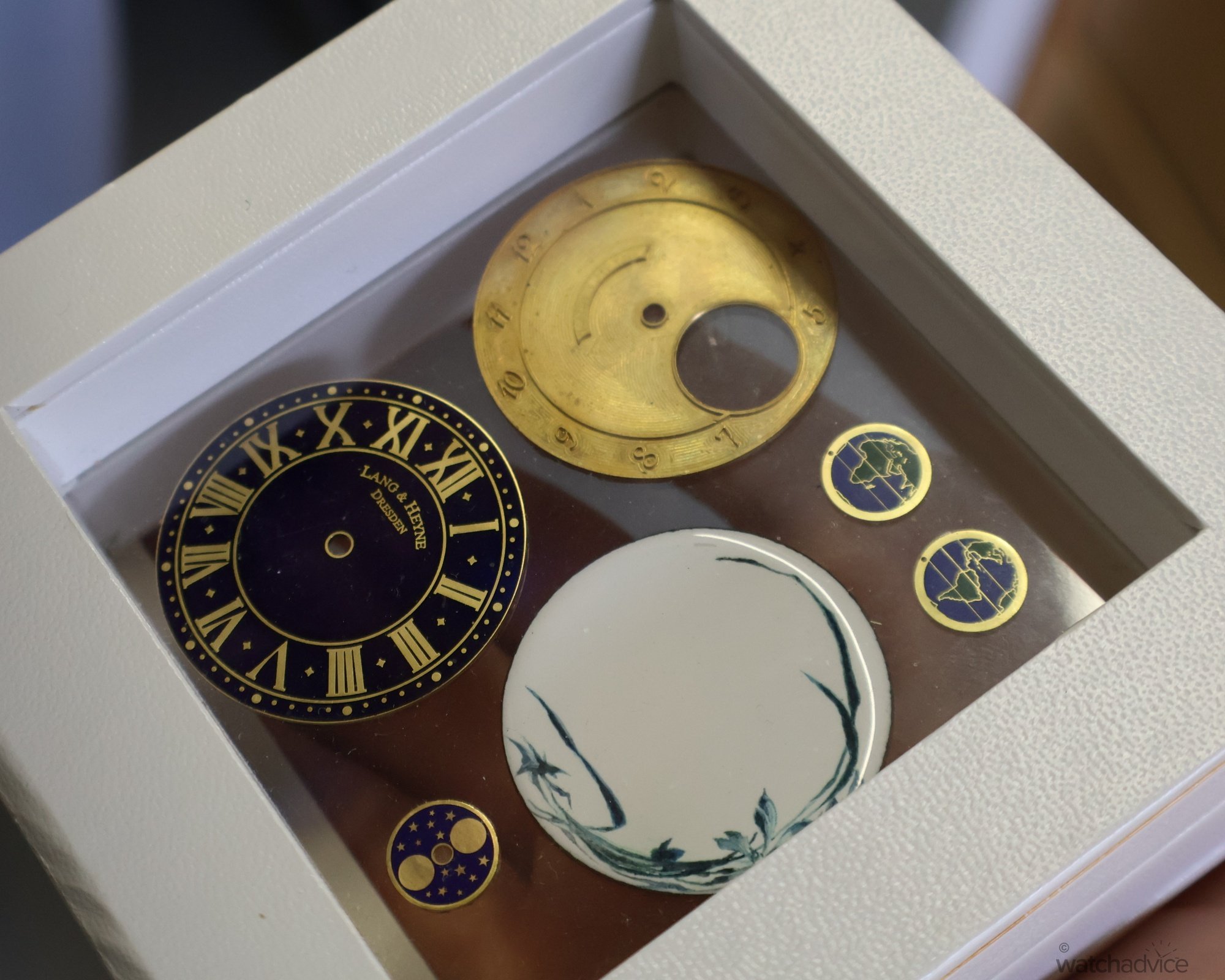
Not long after, Dominique led us to a small room where we met Lang & Heyne’s master enameller. Here, she works alone, painstakingly perfecting the enamel finish that appear on every Lang & Heyne’s silver plate dial. At the time, she was busy finishing several components, yet she graciously guided Dominique as he explained the process to us. I knew it was an intricate and demanding craft — I had read Sam’s Metiers d’Arts article on the subject — but hearing it directly from the source made it feel all the more real, especially considering how heavily Lang & Heyne rely on her expertise alone.
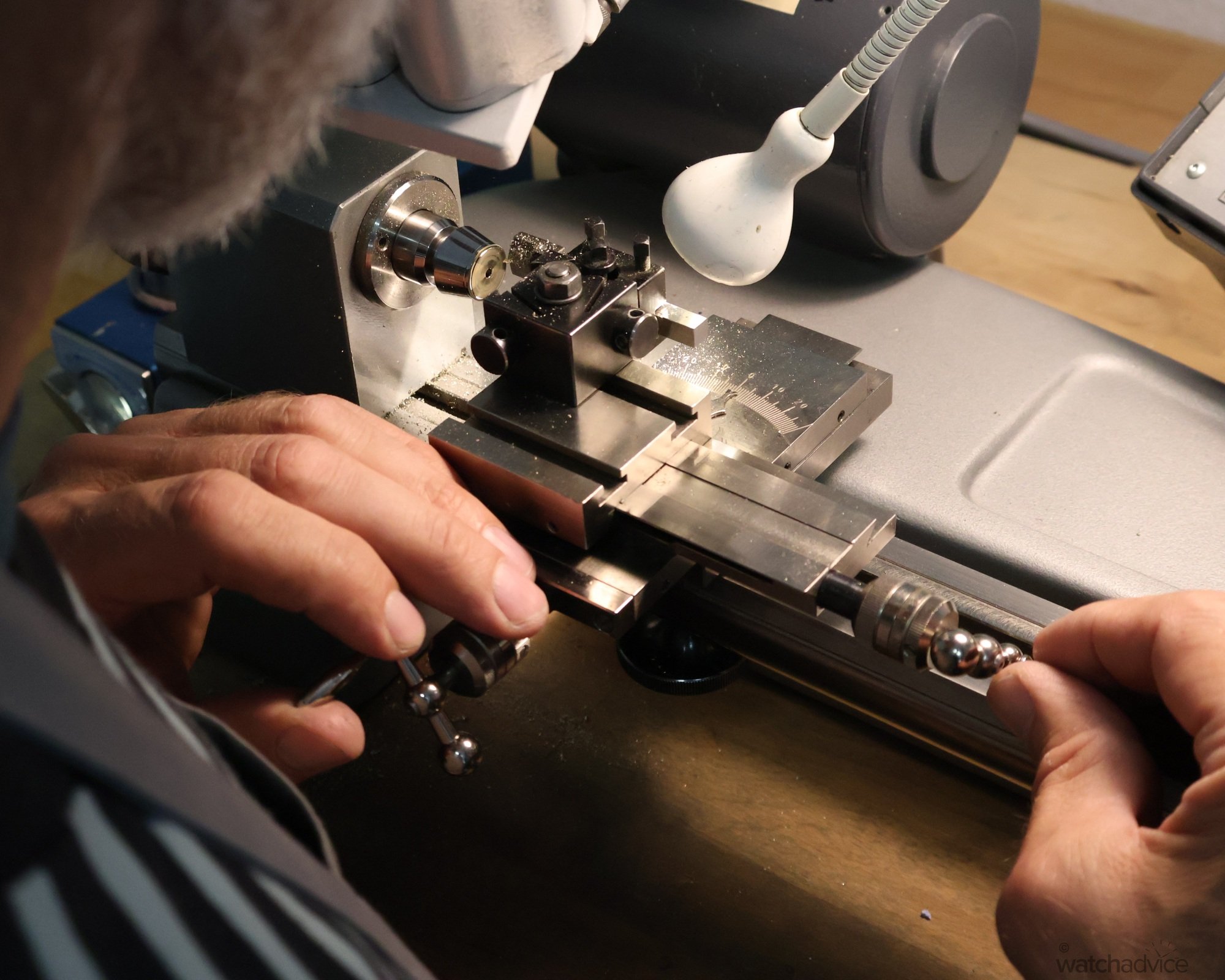
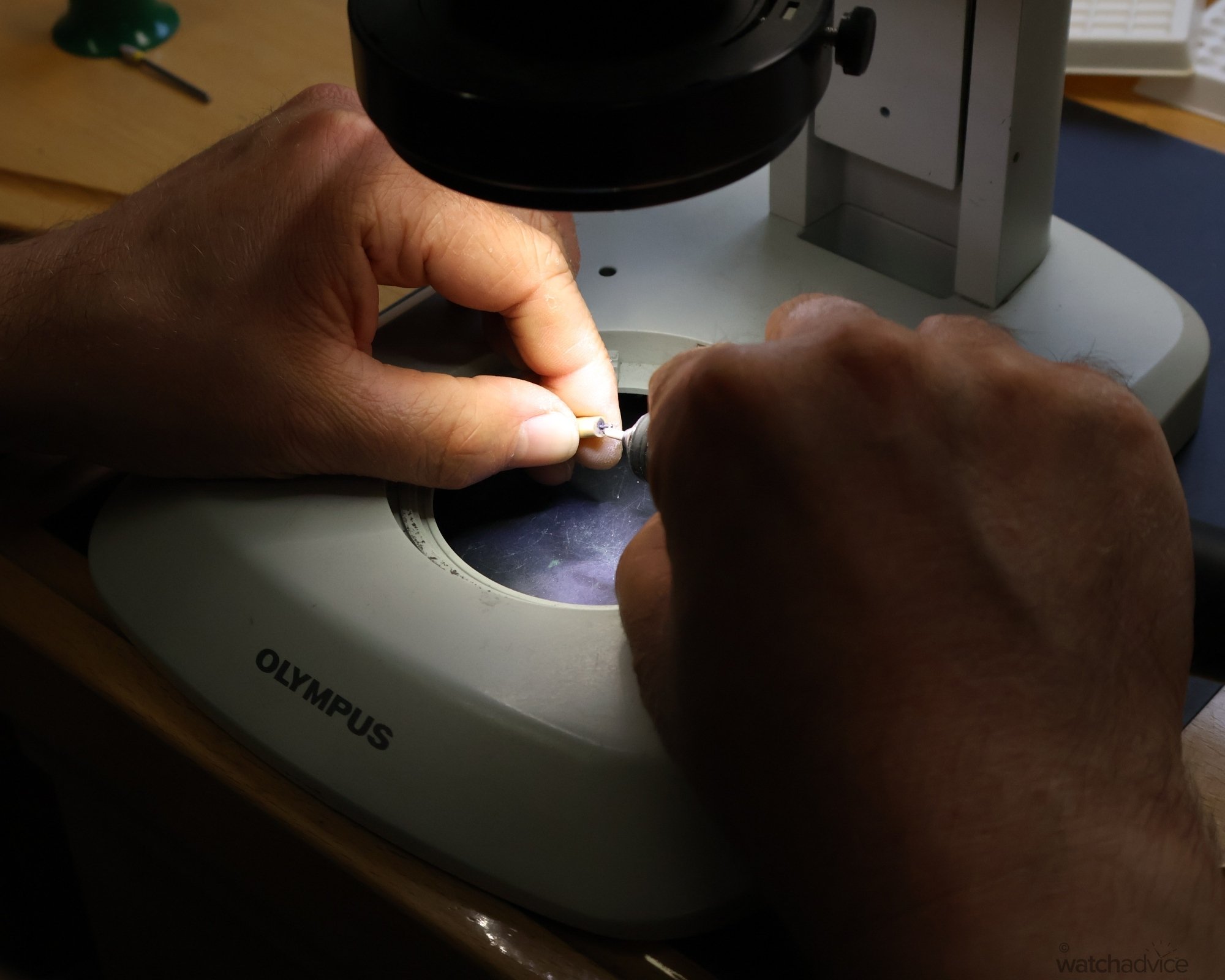
Upstairs, we stepped further into what felt like horology’s own Mr Magorium’s Wonder Emporium. There, more artisans were hard at work, painstakingly finishing and assembling each timepiece by hand. Every detail was executed with uncompromising precision: From the hands and cases to the blued screws, engraved balance cocks, and even the teeth between gears.
It’s this dedication that makes Lang & Heyne collectors some of the most passionate and detail-oriented I’ve ever encountered. As Steve and Dominique recounted, an earlier version of the Anton collection once used a gold escape wheel before switching to a more complex, durable material. When Lang & Heyne released promotional images of the new model, they expected it would take days for anyone to notice. According to Steve, their fanbase spotted the change in barely ten minutes.
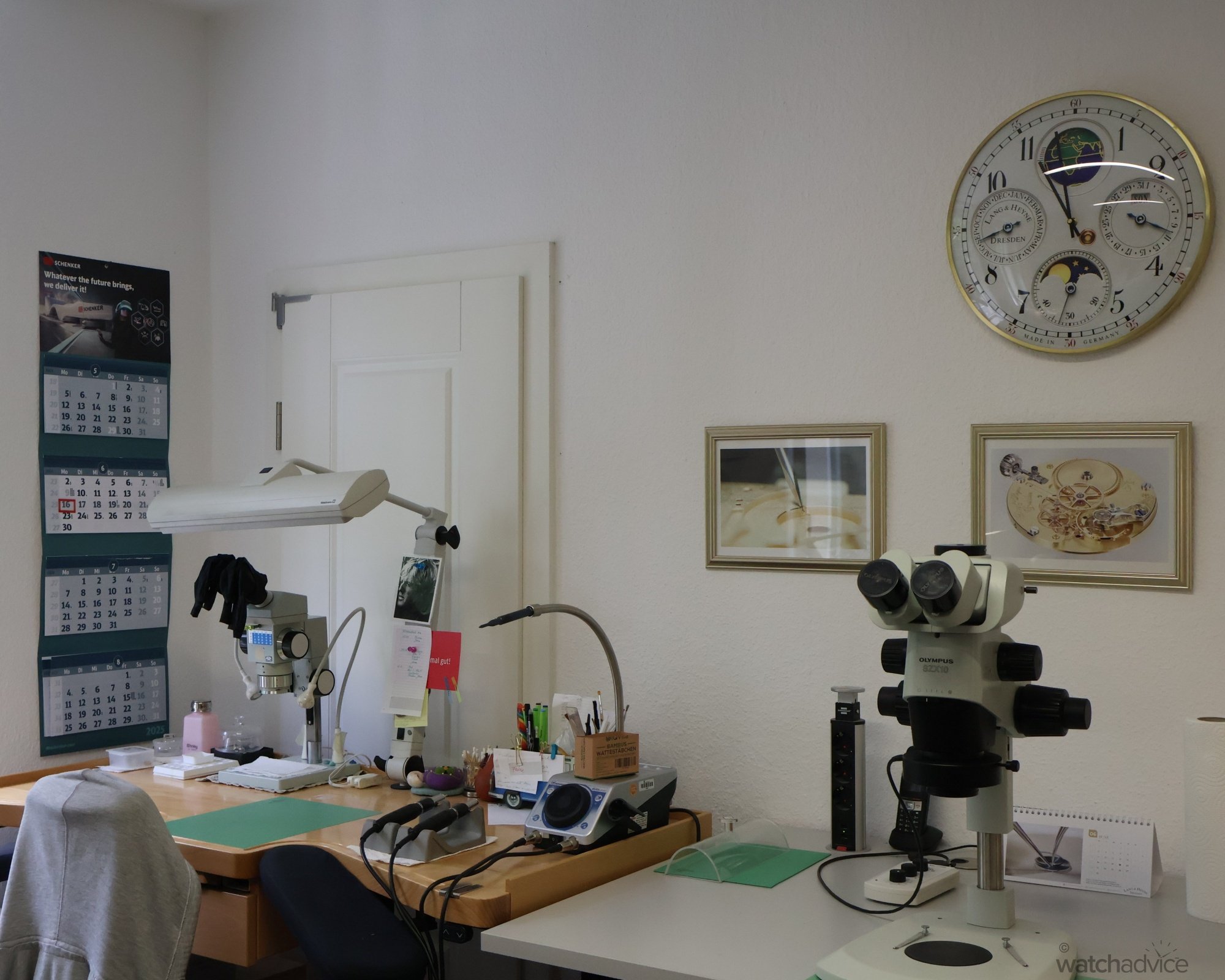
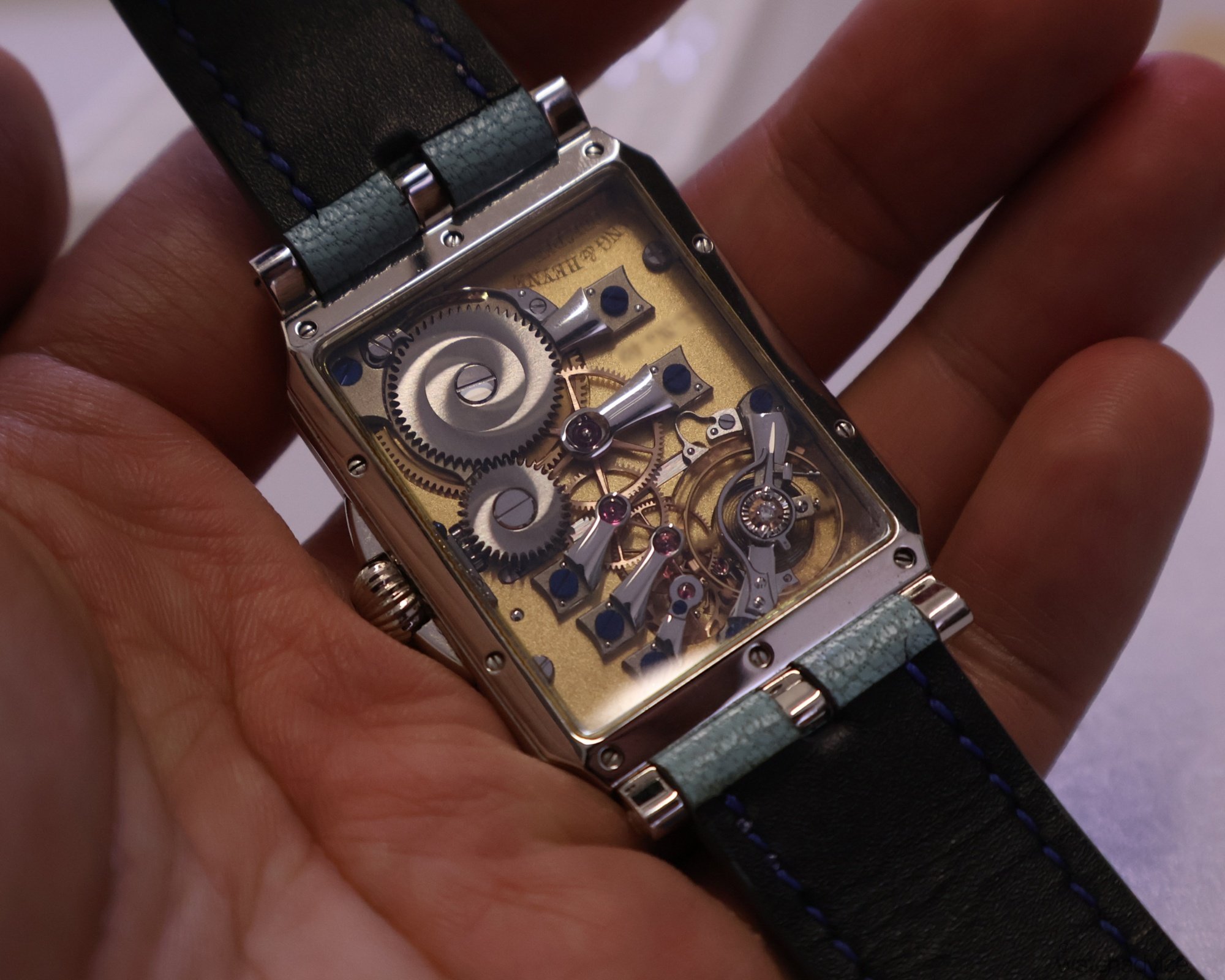
Given Dominique’s awareness to that situation, communication between the brand and its fans is strikingly intimate and reciprocal. Both she and Gülsen spoke of them more as family than clients. It’s perhaps also why Lang & Heyne’s finishing department resembles a science lab more than a traditional watchmaker’s workshop. With microscopes positioned beside nearly every finishing station, they know that every detail is to be meticulously finished in order to pay respect to Germany’s traditional craftsmanship — and pass over their audience’s watchful eye.
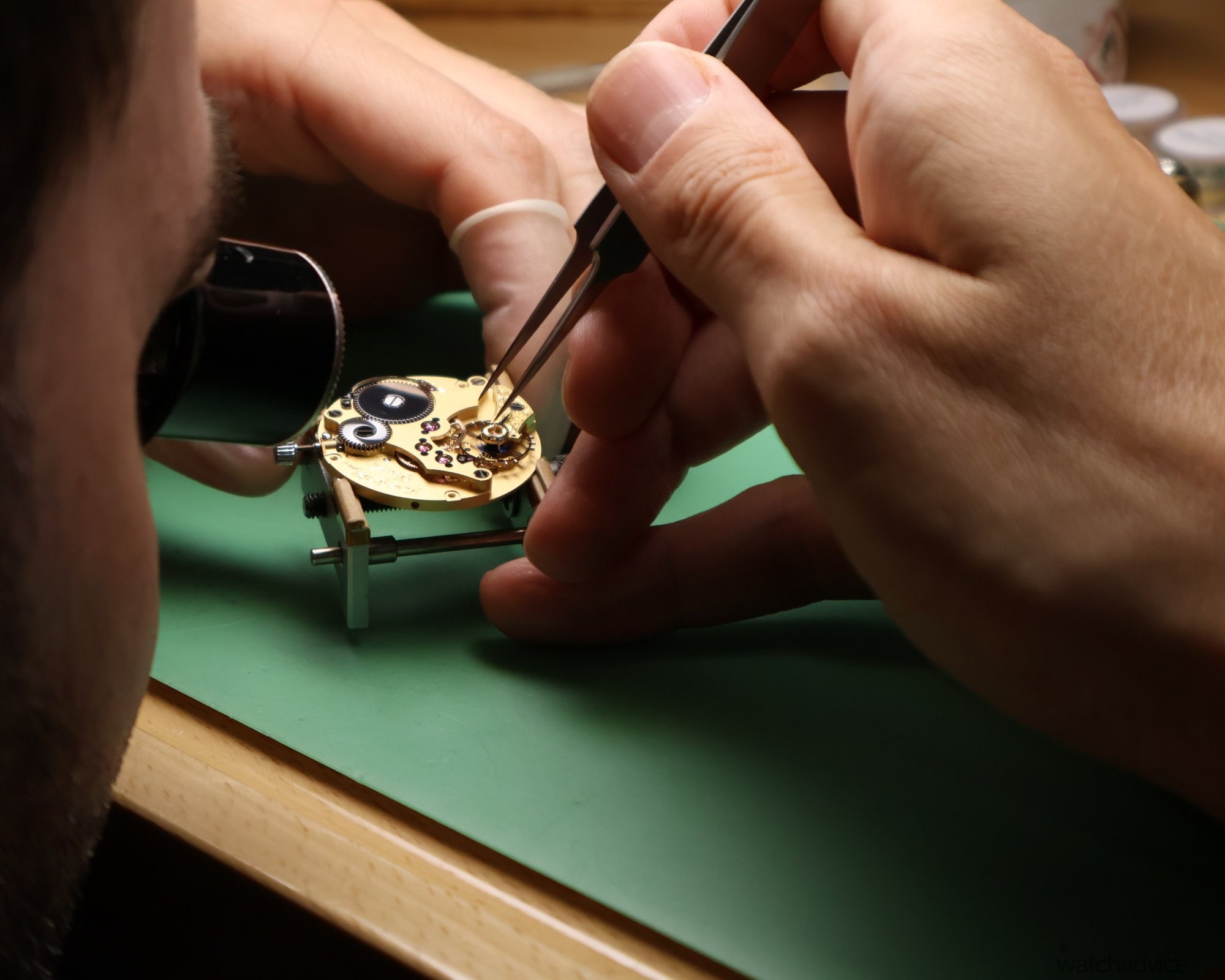
Finally, we arrived at the department of final assembly and testing, another demanding stage for Lang & Heyne, where every aspect of the process is meticulously monitored for even the slightest deviation in tolerance. Here, watches can remain for over a month as they undergo a painstaking cycle of pre-assembly, assembly, testing, disassembly, re-testing, and final assembly before one last round of checks.
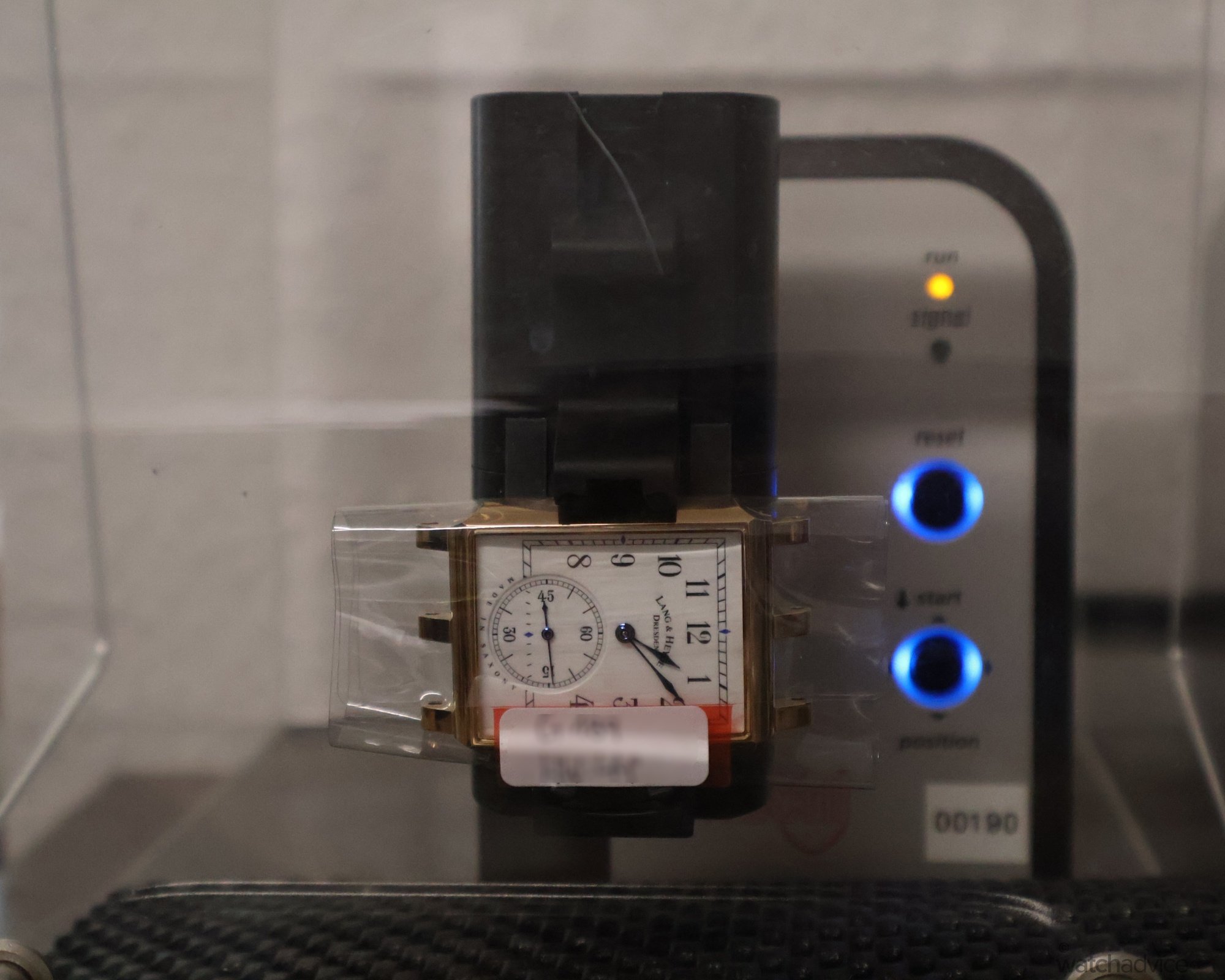
The result? A meticulously crafted watch unlike anything else you’ll ever encounter. It’s the embodiment of German excellence in horology — simple yet deeply considered in design, and refined through an almost obsessive level of regulation and finishing. While the process is time-intensive (Lang & Heyne produces only around 100 to 150 watches per year), the final product is truly unparalleled in its presentation.
I even had the privilege of witnessing one of these movements come to life for the very first time, the culmination of countless weeks of testing. I won’t say whose watch it was, though — why spoil the surprise? (Hint: it wasn’t mine.)
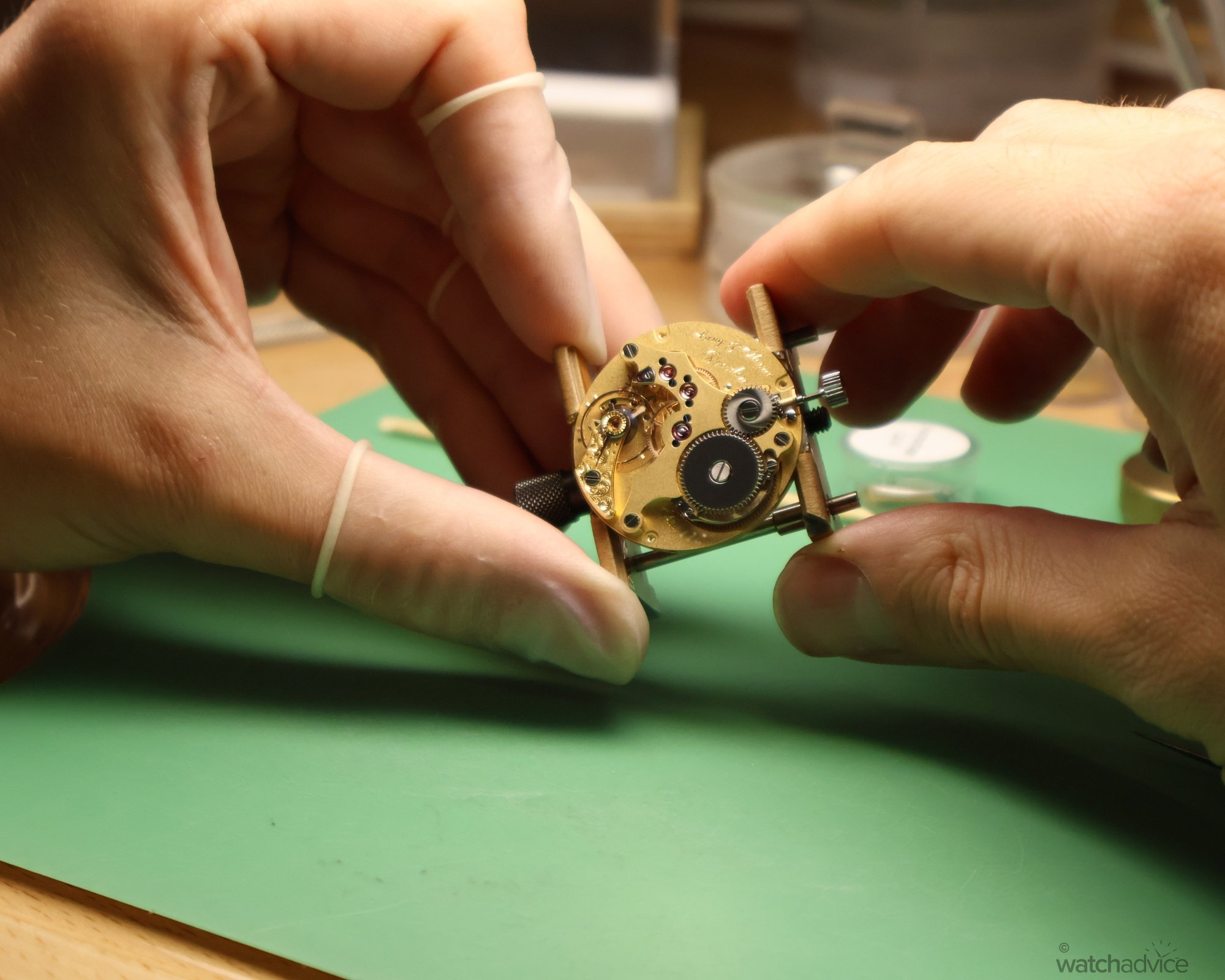
Overall, this tour was a striking change of scale and pace from what I’d experienced before. It’s fascinating to see how attitudes towards watchmaking differ among German brands. The respect for traditional craftsmanship remains constant. Whether it’s a powerhouse like Glashütte Original or a smaller manufactory like Lang & Heyne — but the approach is vastly different.
While I was awed by the sheer magnitude and precision of the former, the latter felt intimate — less like an organisation and more like a tightly knit team of passionate artists devoted to creating extraordinary horological works. Dominique’s knowledge and charm shone through effortlessly; While the visit was deeply informative about the brand’s technical prowess, it also felt like catching up with an old friend.
On The Road Again
Once the tour concluded, Gülsen and Dominique joined Steve and me for a spread of finger foods. Among them was a regional speciality I hadn’t yet tried: Dresdner Eierschecke. I’m no foodie (and definitely more of a cookie than a cake person), but tasting Eierschecke was quite the experience. I’ve made a note to try and figure out how to remake it back home!
Both Steve and I had brought a few favourites of our own as well: he came armed with an assortment of sweet treats from Hong Kong, while I brought along Australia’s iconic Double Coat Tim Tams. (Some time after my visit, Dominique even surprised me with a video of the Lang & Heyne team, including CEO Alexander Gutierrez Diaz, attempting a Tim Tam Slam.)
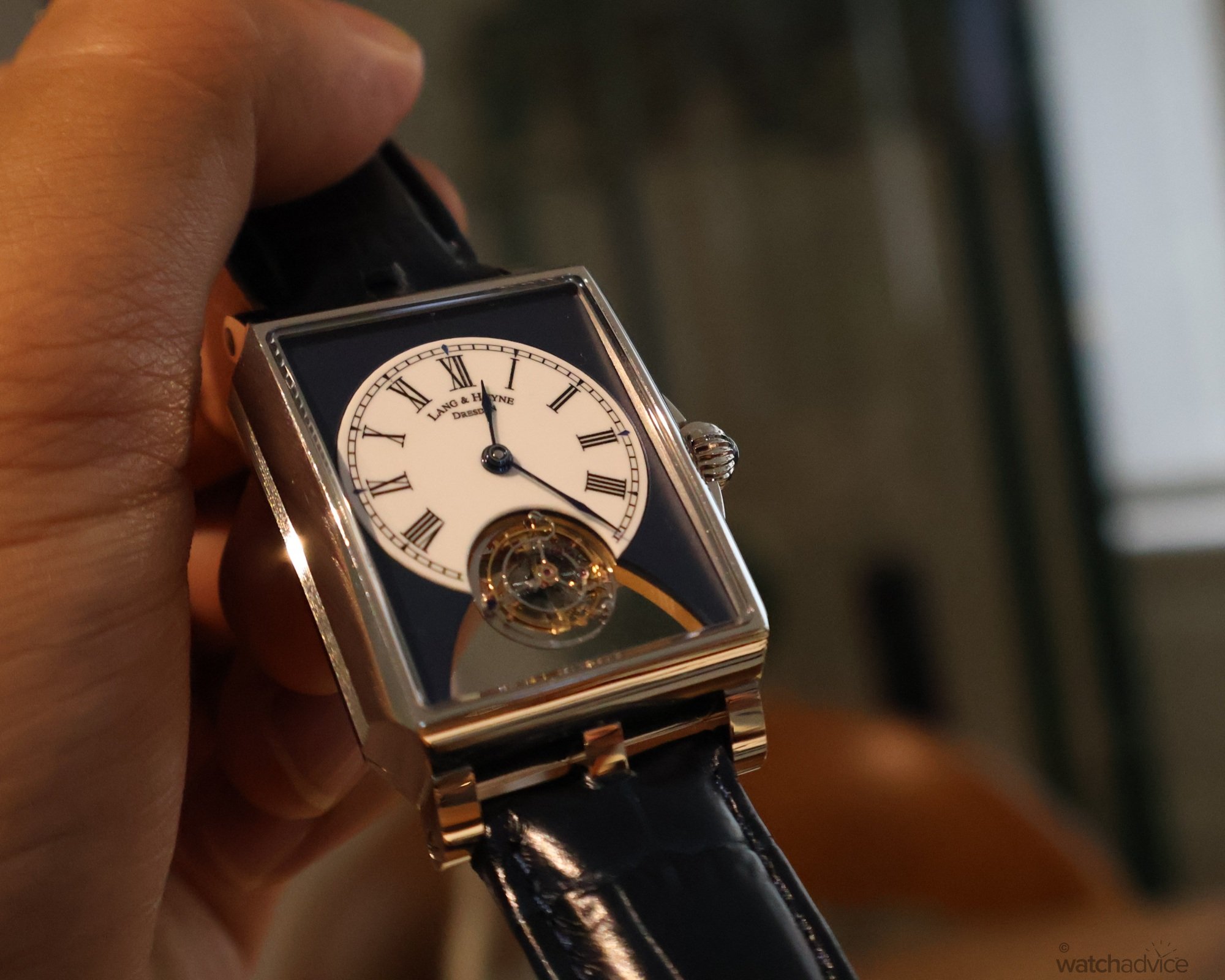
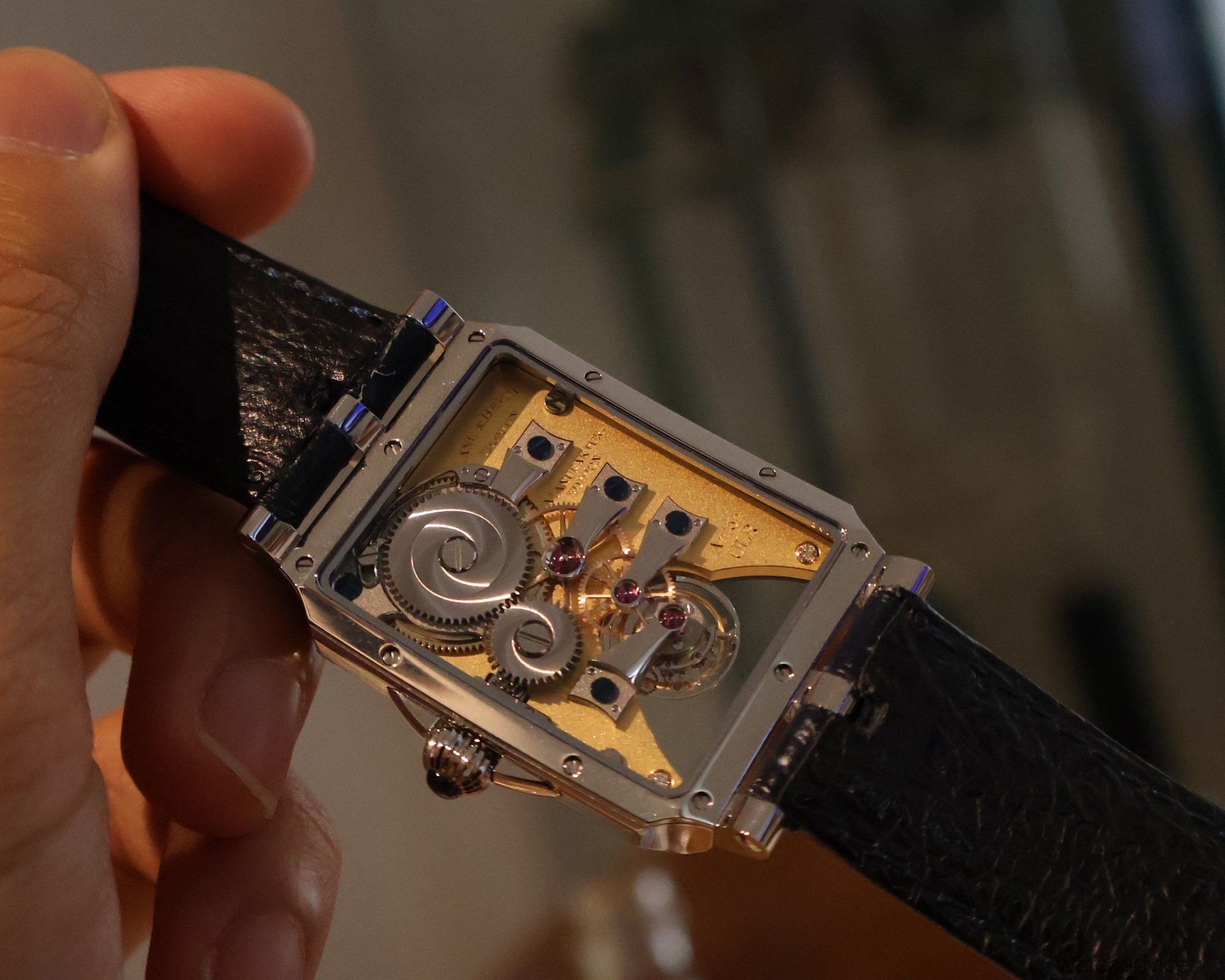
Steve and I hopped back into Gülsen’s car to visit a gentleman named Mathias Köhler. A master engraver, Mathias has worked with a veritable who’s who of Germany’s finest watch brands. This included the aforementioned Glashütte Original, Moritz Grossmann, and of course, Lang & Heyne. In his workshop, located right next door to brand founder Marco Lang’s house, we had the chance to get an up-close look at his craftsmanship.
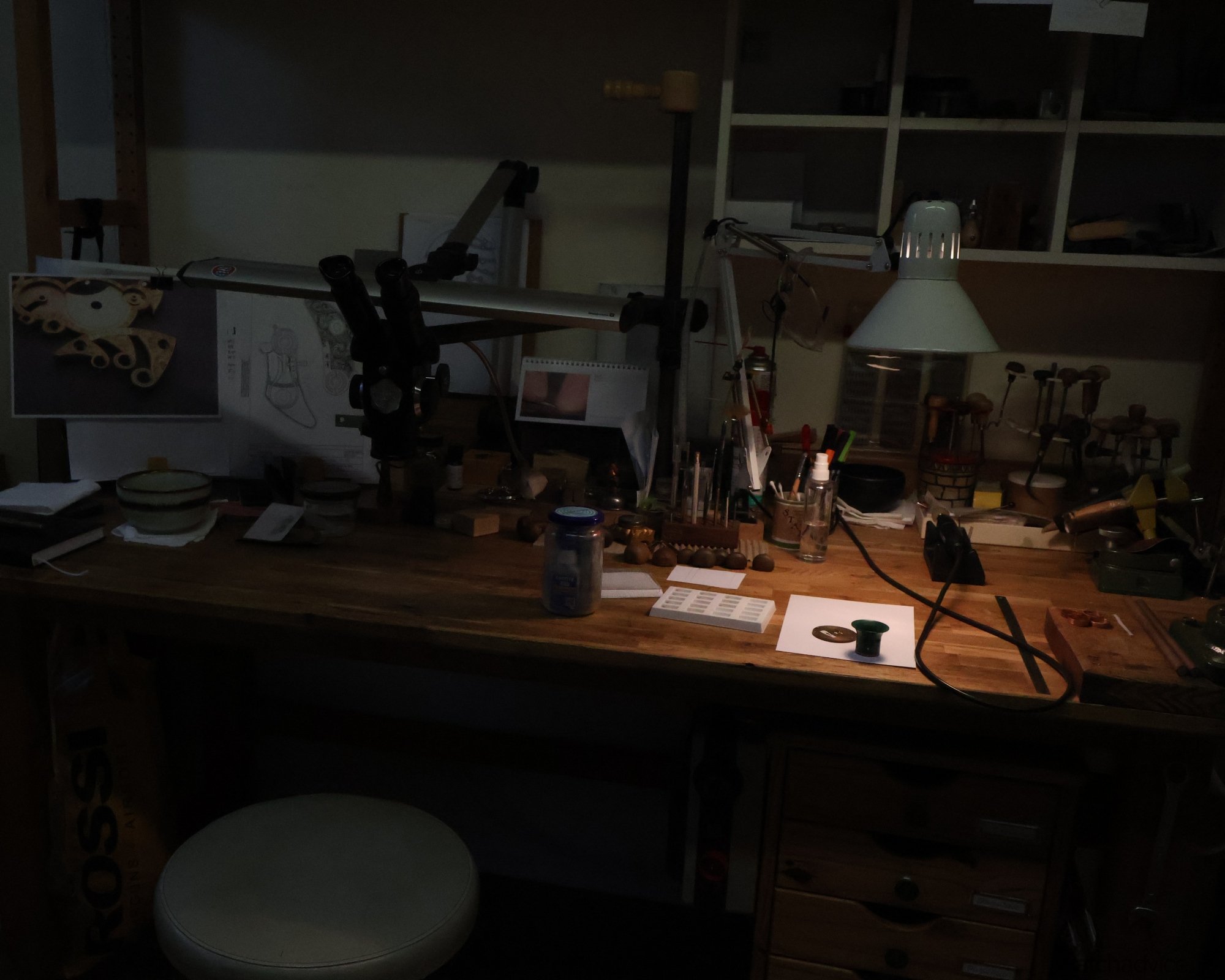
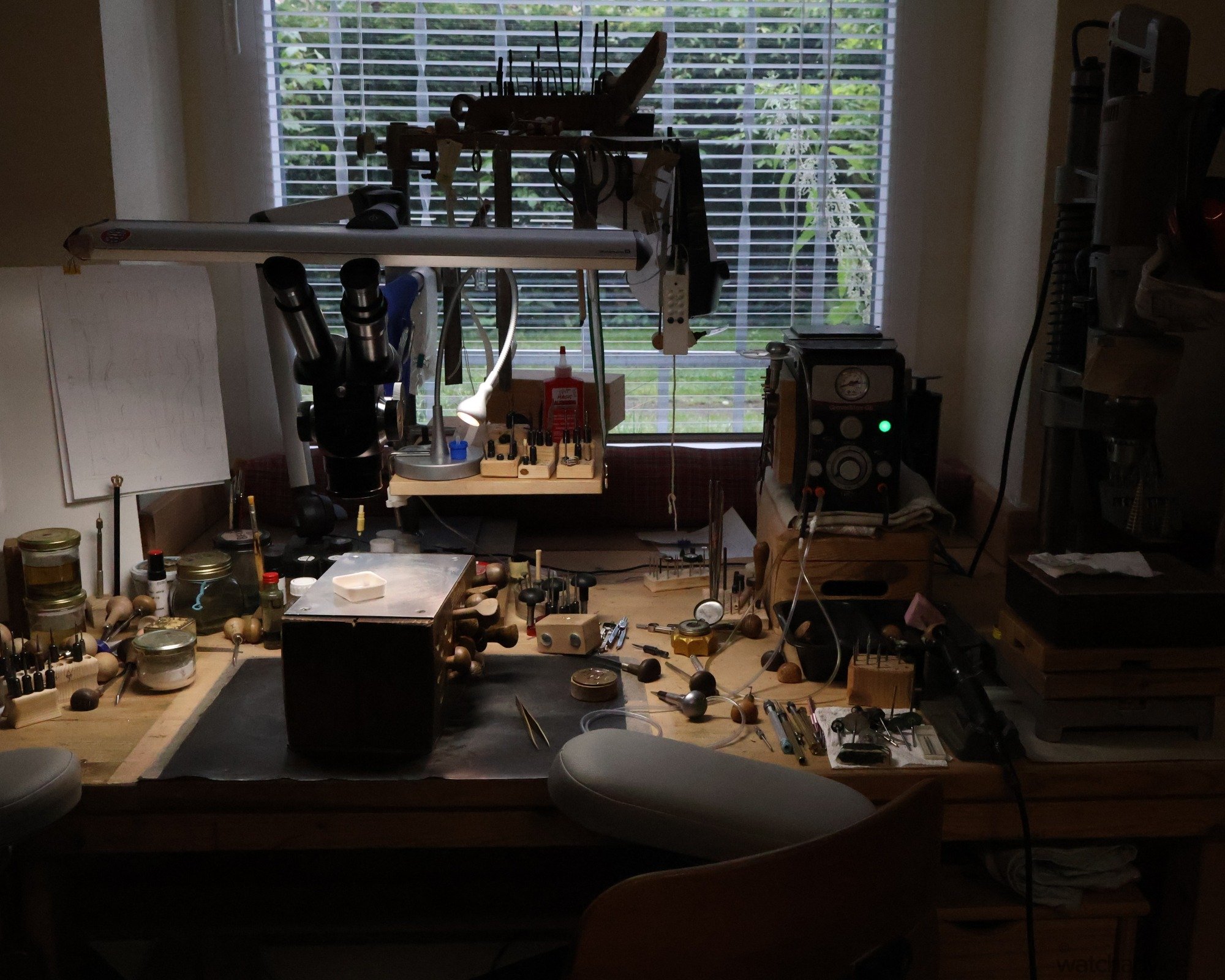
For Steve, it was a moment of pure wonder; His own Lang & Heyne Georg model featured a custom set of baroque-style hands. By coincidence, we arrived just as Mathias was working on a similar set, delicately refining them under a microscope. Watching him work in absolute awe, I was struck by how perfectly he embodied Germany’s devotion to fine craftsmanship. Even when he paused to inspect his work (which, to my eyes, looked flawless), he simply remarked that it was ‘not good enough.’ He told us that he anticipated refining that same set of hands long after we had gone.
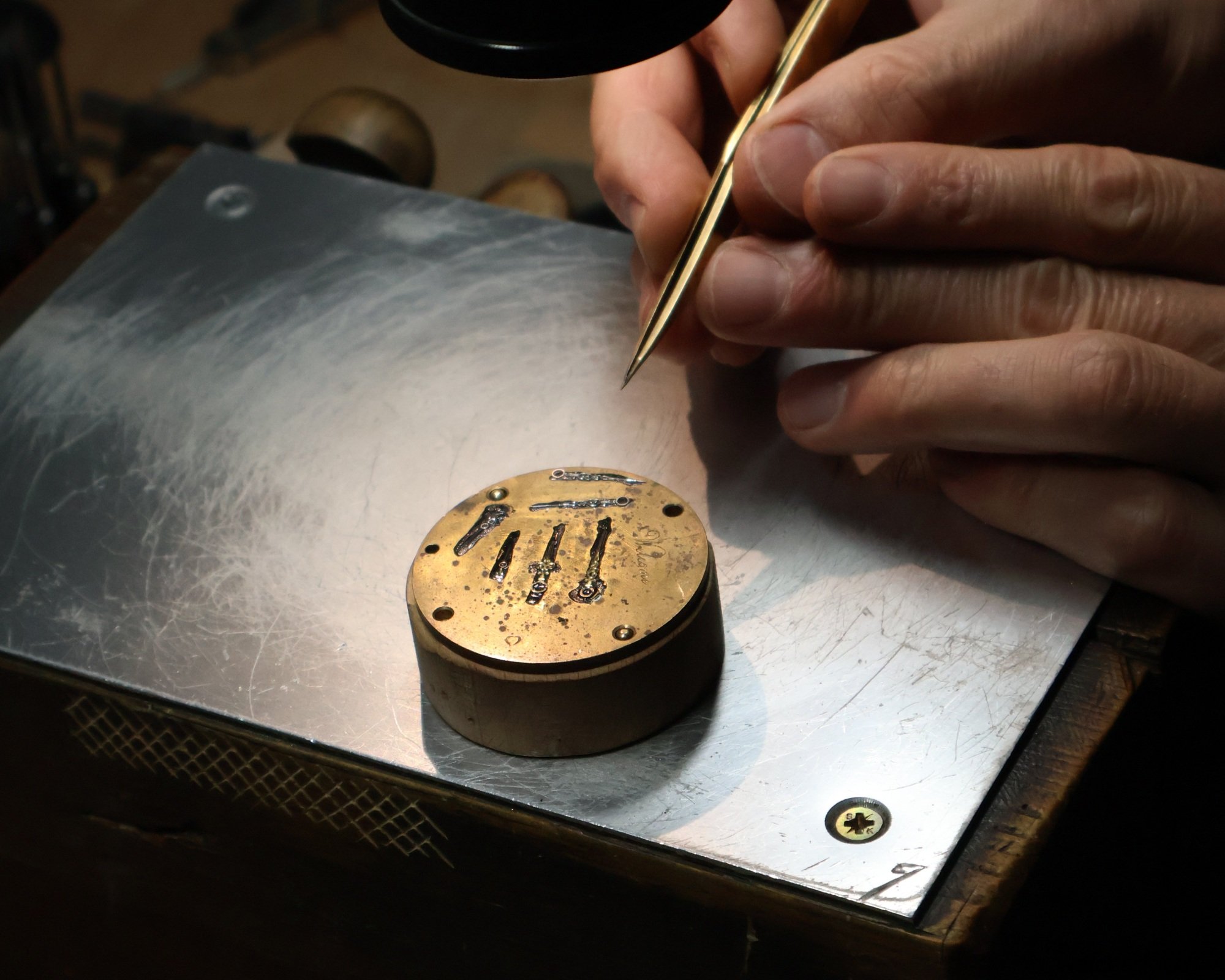
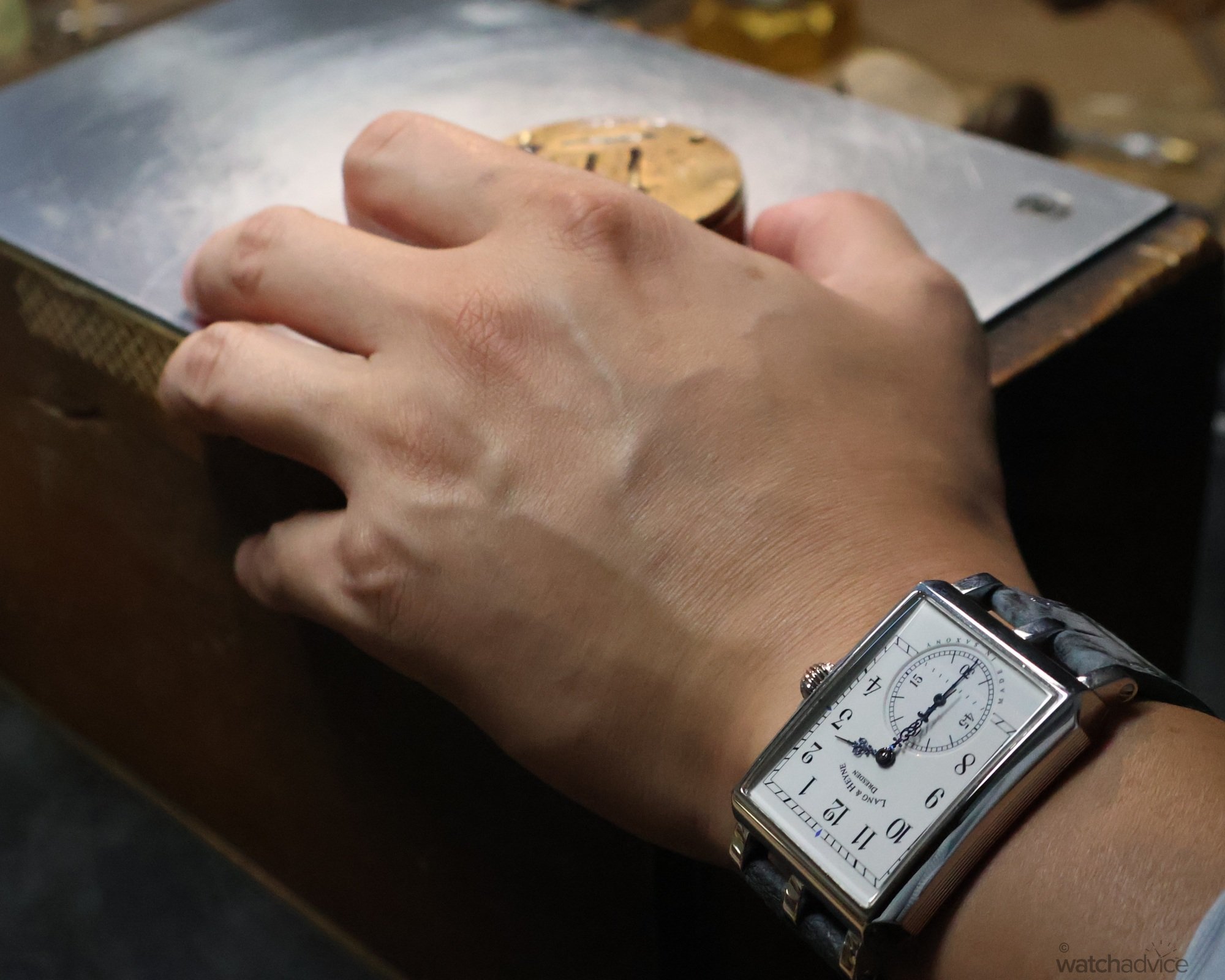
After bidding farewell to Mr Köhler, Gülsen drove Steve and me back to Altmarkt, where we reunited with Dominique. From there, they were more than happy to help us explore more of what Dresden’s old town had to offer. Our first stop was for currywurst: a recognisable staple of the Brisbane markets, but this was the real deal. However, authentic currywurst packed far more spice than I’d anticipated, so I was especially grateful for the beer that came with it.
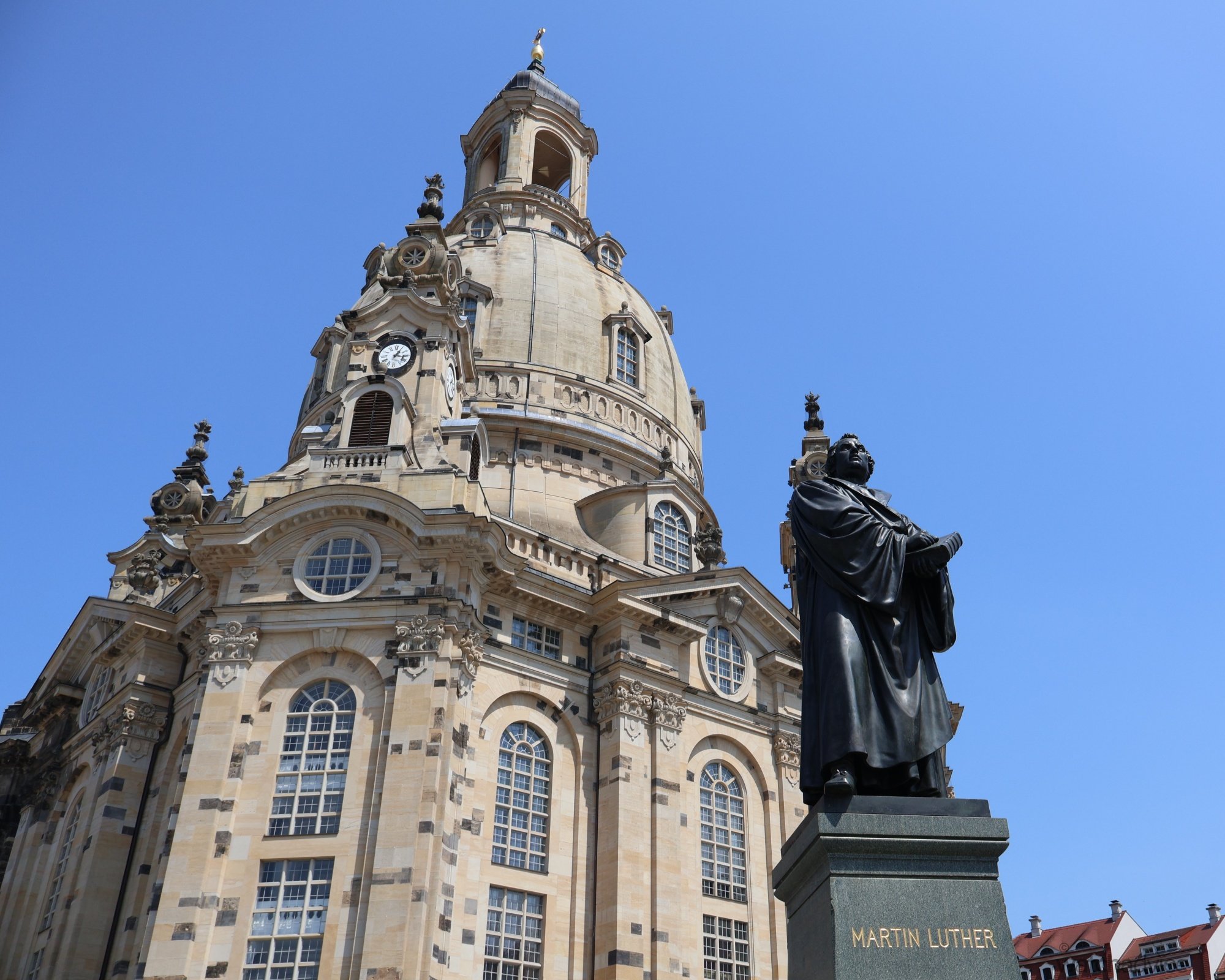
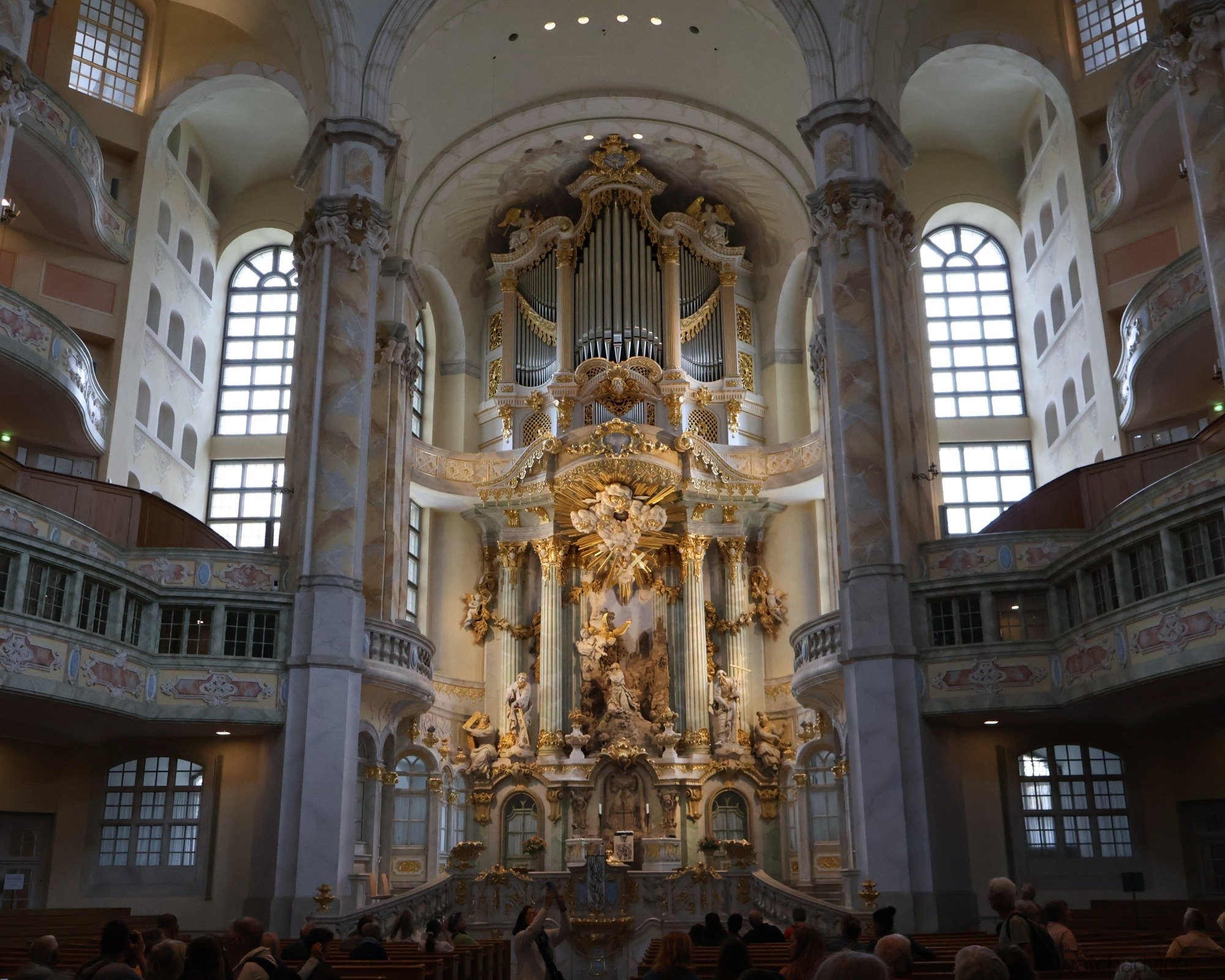
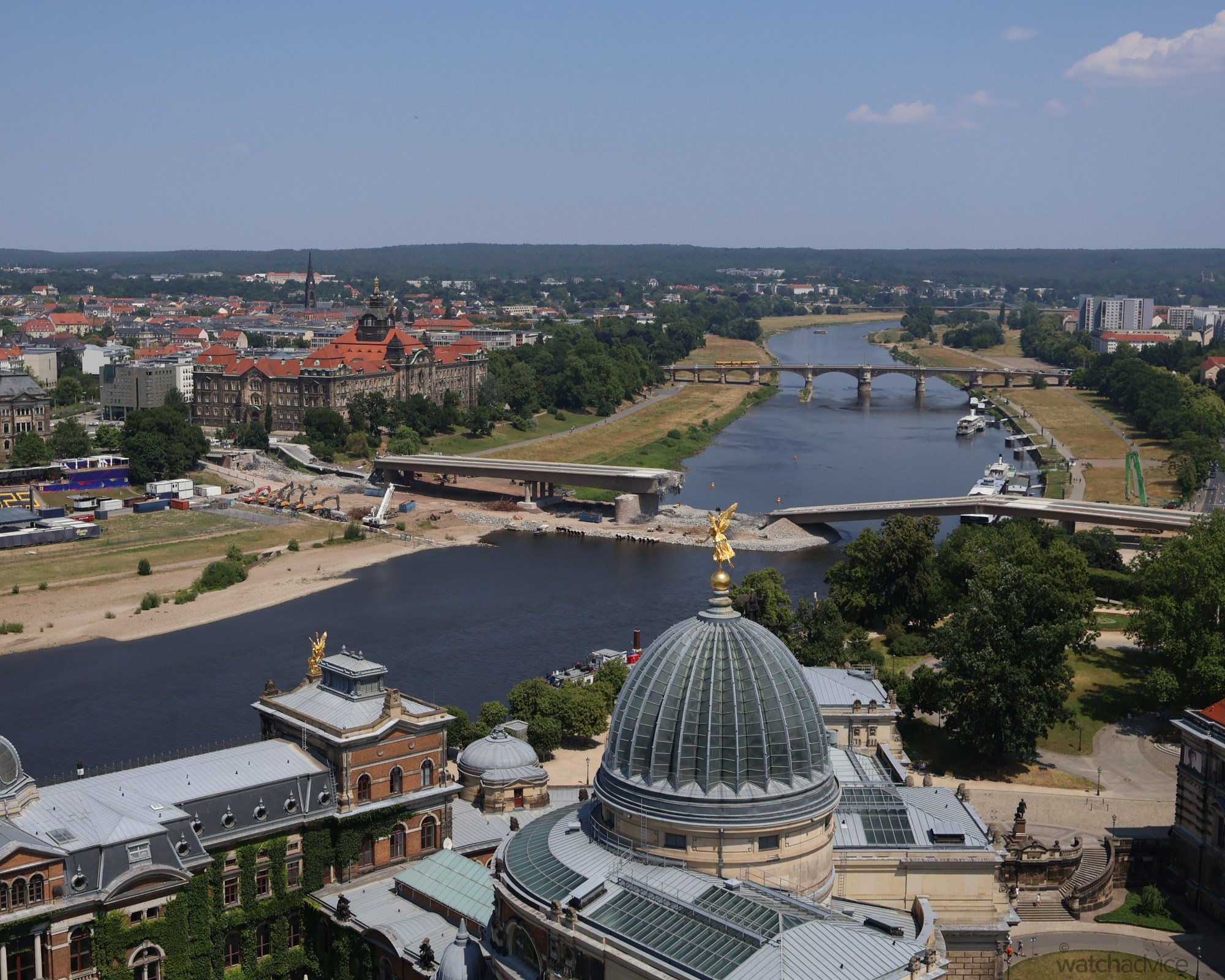
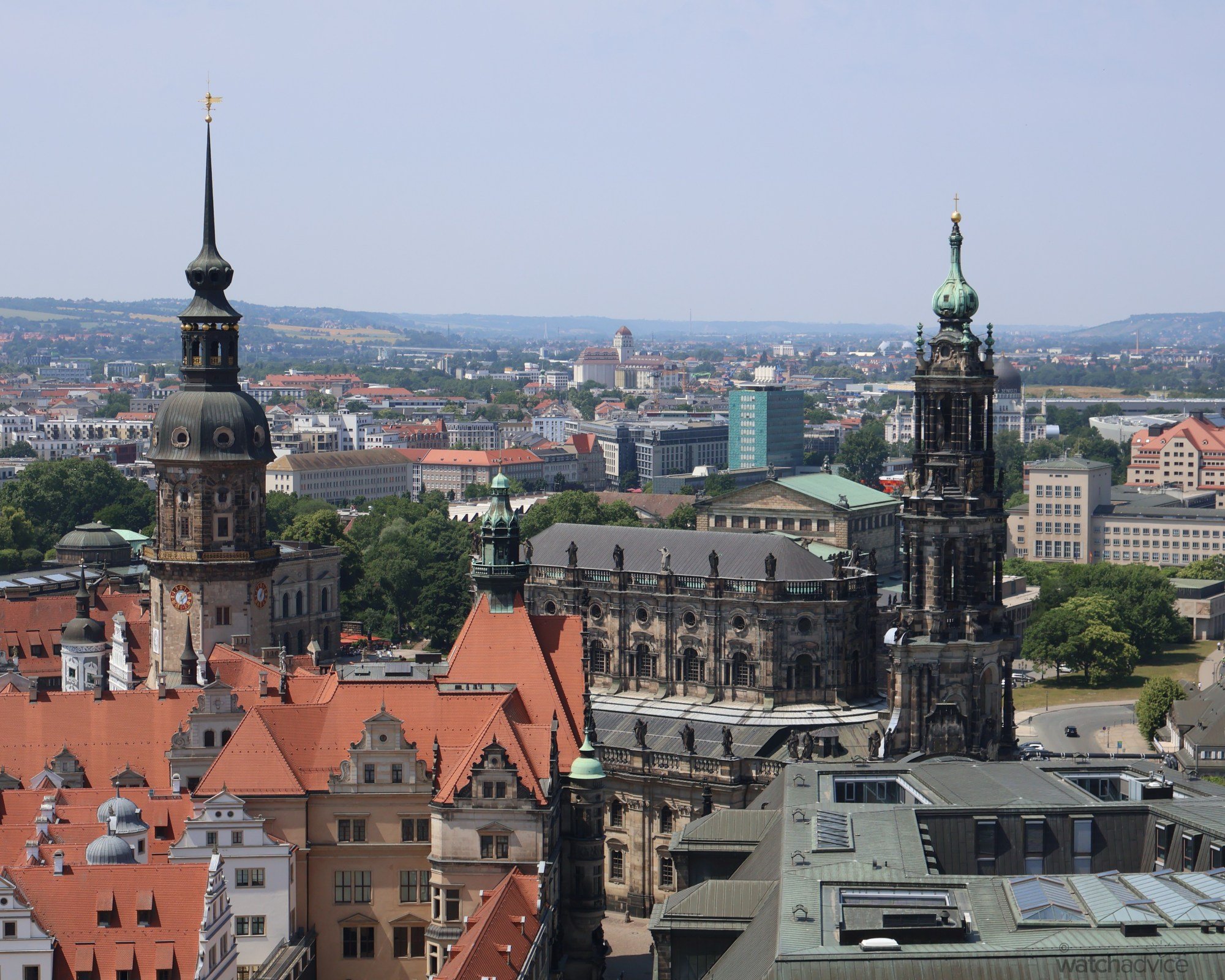
One of the highlights of our tour of Dresden was our climb to the top of the Frauenkirche. While the architecture of Dresden’s Altstadt is breathtaking, it’s both important and sobering to note that almost none of it is original. The Second World War saw Dresden flattened in an Allied bombing raid, which completely destroyed the Frauenkirche, the Dresdner Zwinger, and many other heritage buildings. Reconstruction only began after the reunification of Germany, with the Frauenkirche fully restored in 2005. The restoration of Dresden’s old town continues to this day.
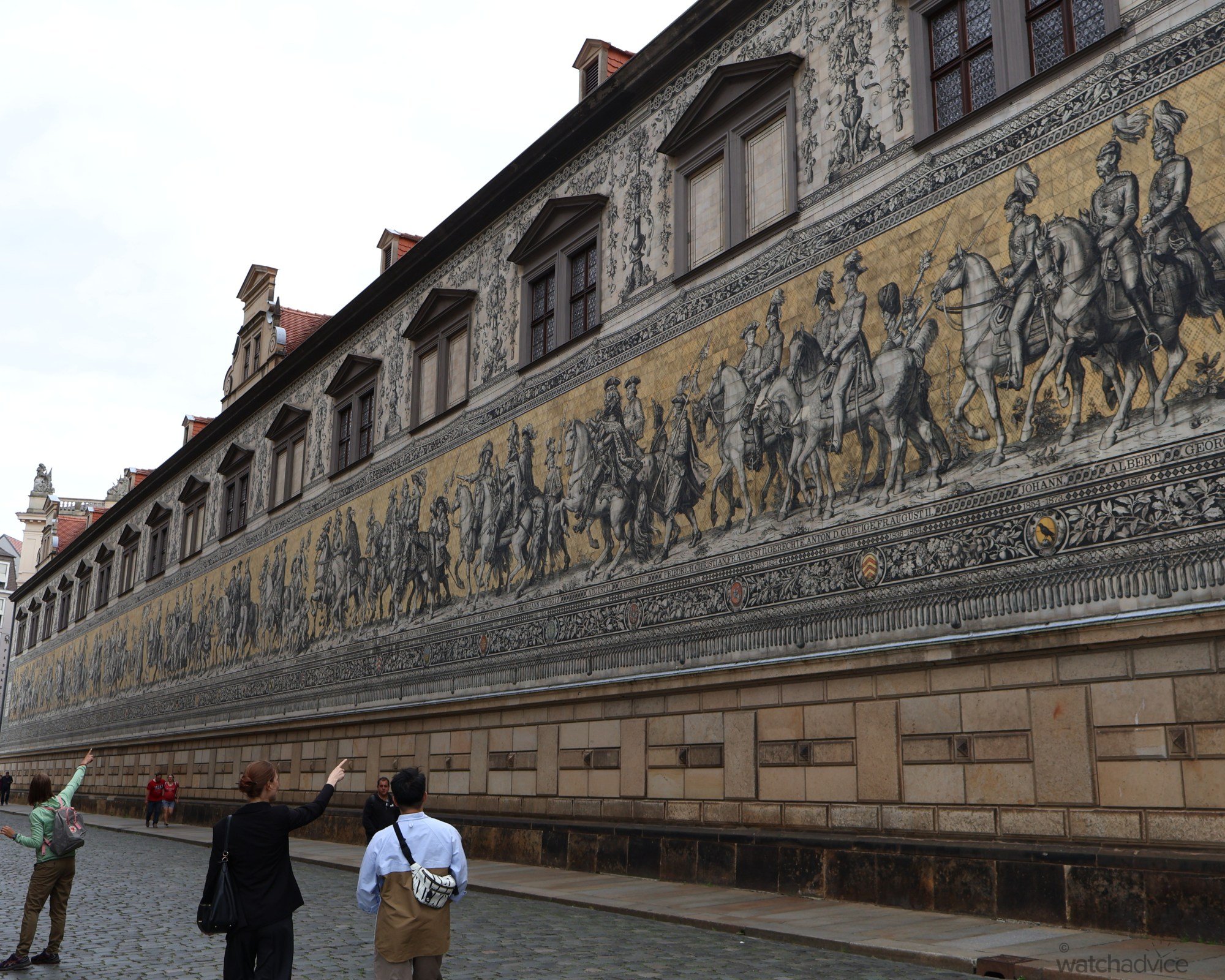
Another of my favourite sights in Dresden — and one that miraculously survived the wartime destruction — is the Fürstenzug, or Procession of Princes. This mural depicts a large portion of the city’s rich history and also serves as an important reference point for the Lang & Heyne brand. Imbuing their watches with an unmistakably Dresdner identity, Lang & Heyne names its collections after the notable figures featured on this very wall. The only exception is the Hektor line, named after Joachim II, Prince-Elector of Brandenburg, who was himself nicknamed after the mythological Trojan hero Hector.
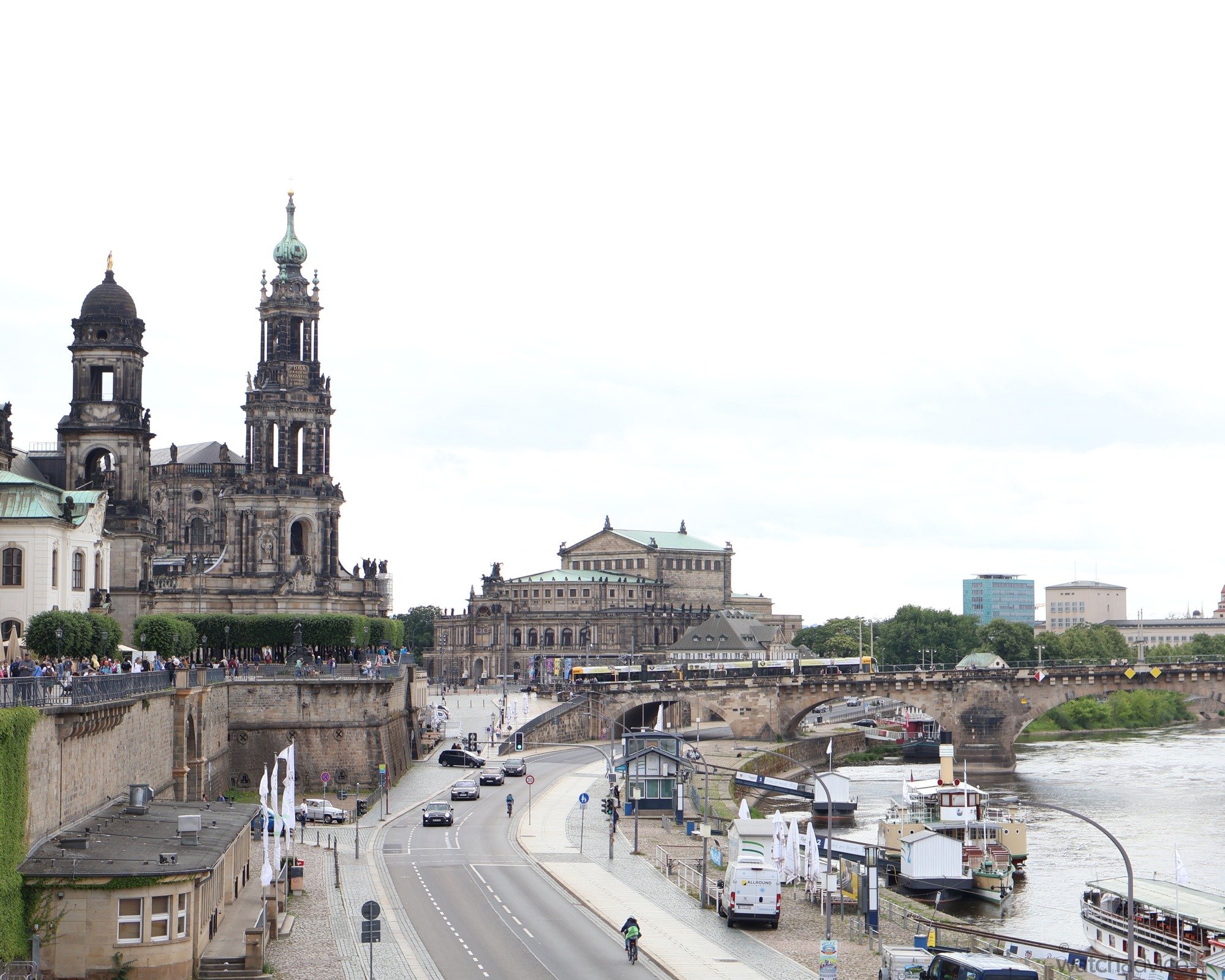
Gülsen and Dominique could recount Dresden’s history at the blink of an eye. Their passion for both watchmaking and the city Lang & Heyne represents shone through; They were as knowledgeable about Dresden itself as they were about horology. Unbeknownst to me, however, it also happened to be Dominique’s birthday. So, when we realised we’d been chatting straight through to dinnertime, it only felt right to help her celebrate. We laughed, ate, and drank the evening away, but as with all good things, the day eventually had to end. My three companions kindly escorted me back to my hotel, where I bid them farewell before turning in for the night.
Final Thoughts
Throughout my travels across Europe’s horological landmarks, I truly had no idea what to expect. My goal was simply to absorb as much of the continent’s watchmaking culture and knowledge as I could. Yet I could never have anticipated my time with Lang & Heyne turning out quite like it did. The day I spent with Dominique, Gülsen, Steve, Mathias, and the rest of the Lang & Heyne team left me both surprised and deeply inspired.
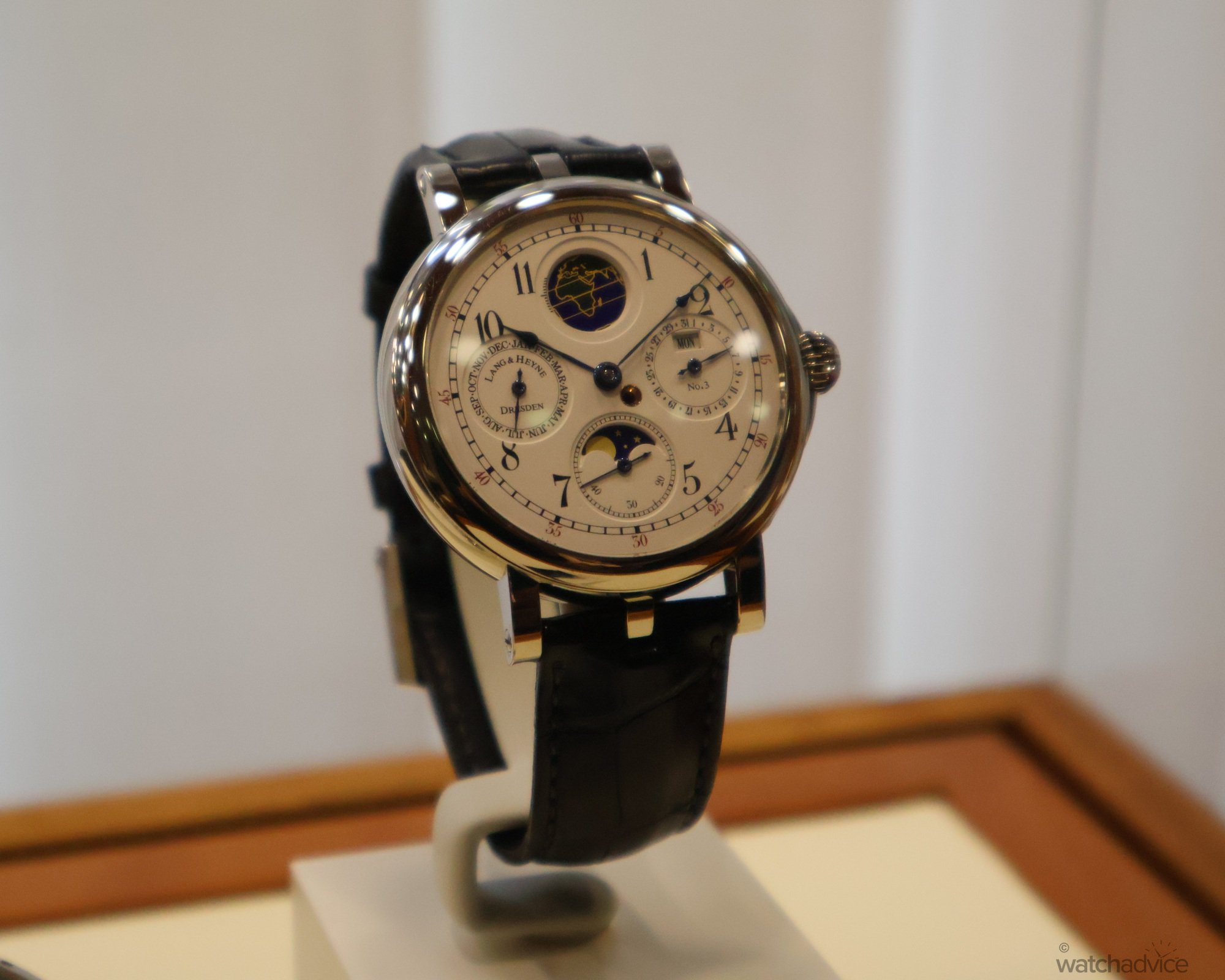
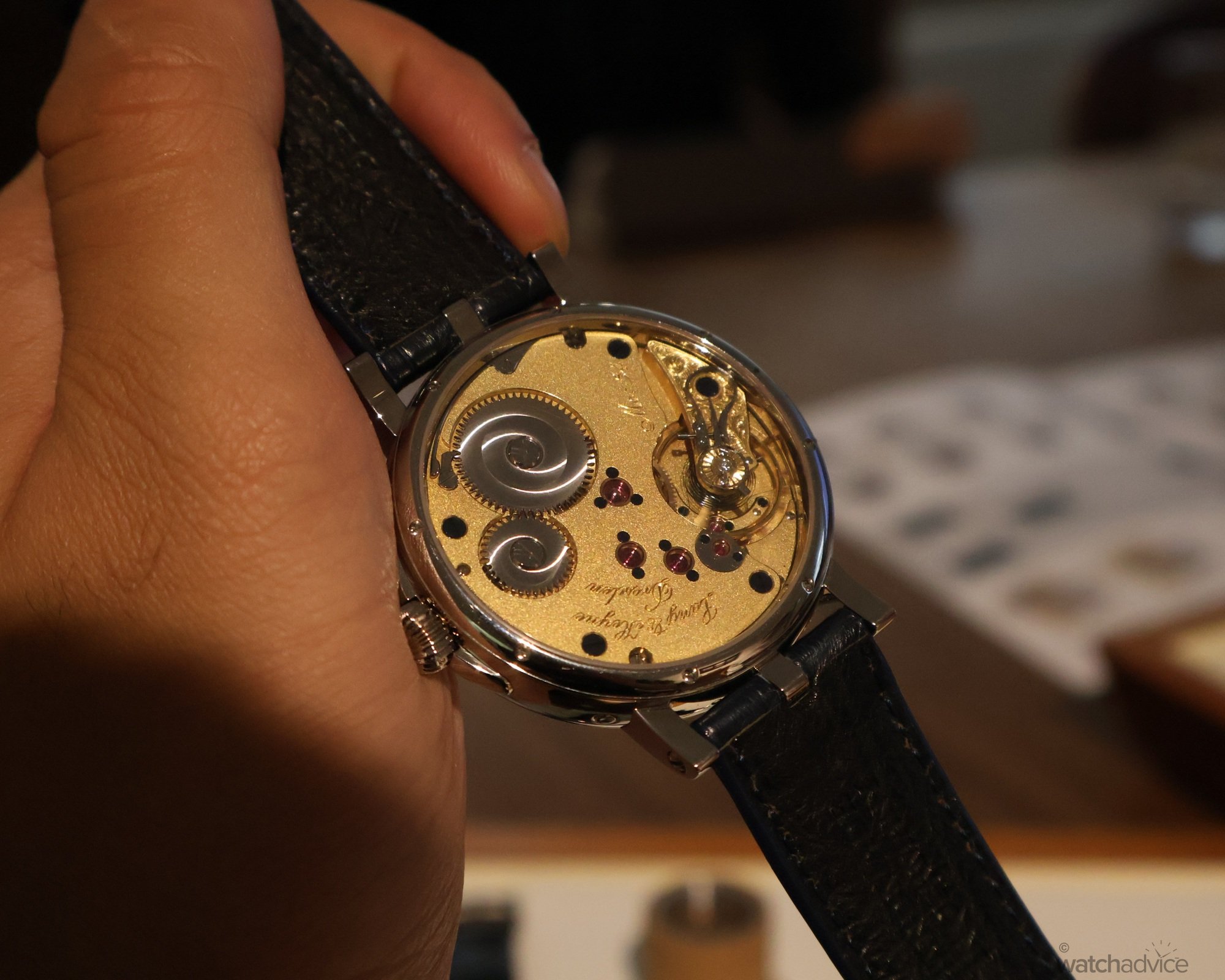
I was genuinely grateful to be welcomed with such open arms, especially in a corner of the world I had, until then, only heard stories about. Everything felt new and unfamiliar, and I was nervous about what the day would bring. But the hospitality Lang & Heyne showed was nothing short of extraordinary, and their commitment to preserving Germany’s traditions of fine horology is absolute.
While I’m still a few cents short of calling myself a true member of the Lang & Heyne family, my day with them in Dresden has left a lasting impression. I haven’t yet figured out when I’ll return to that beautiful city, but I know that when I do, I’ll be sure to visit them again.


